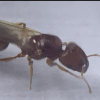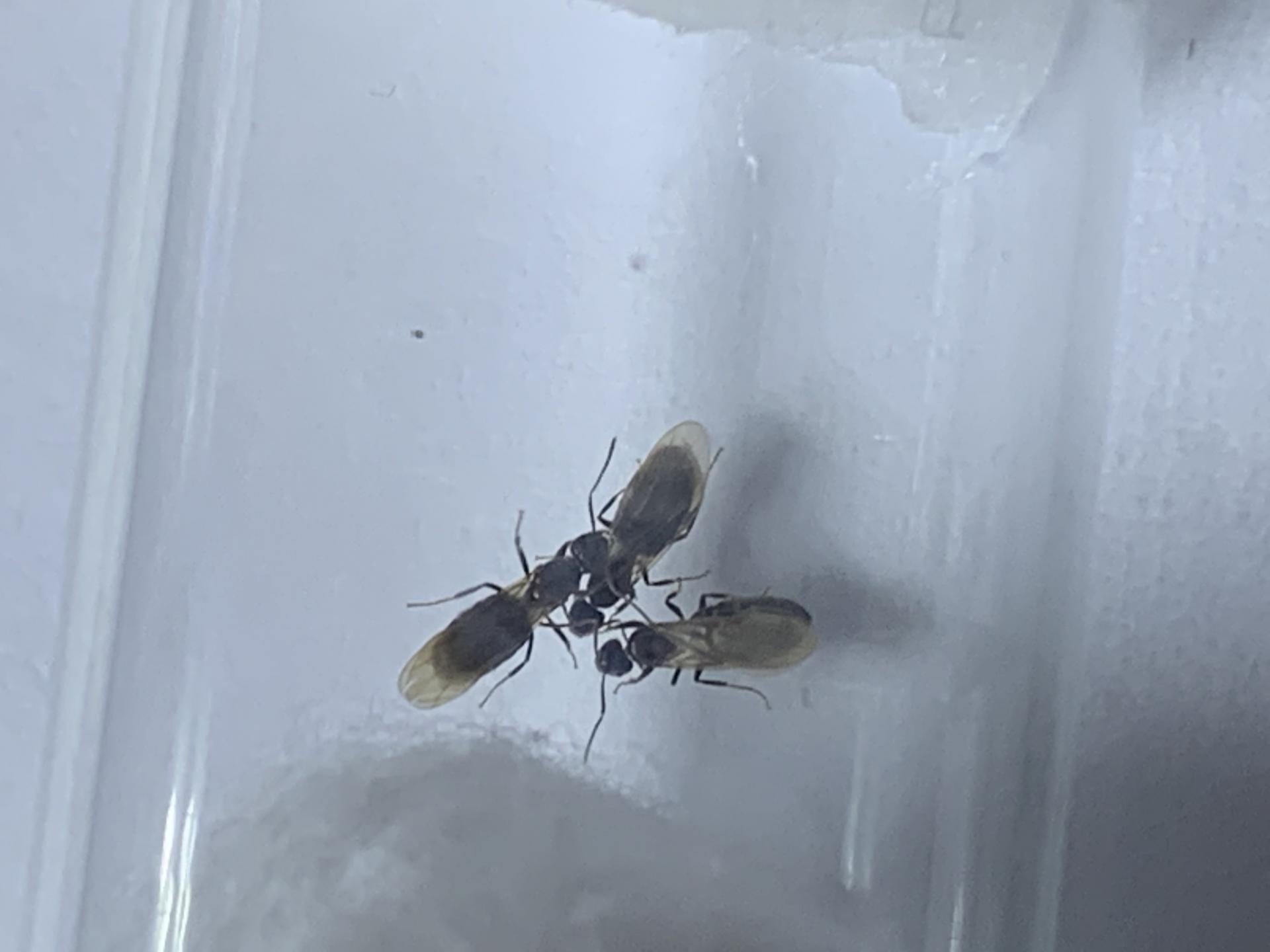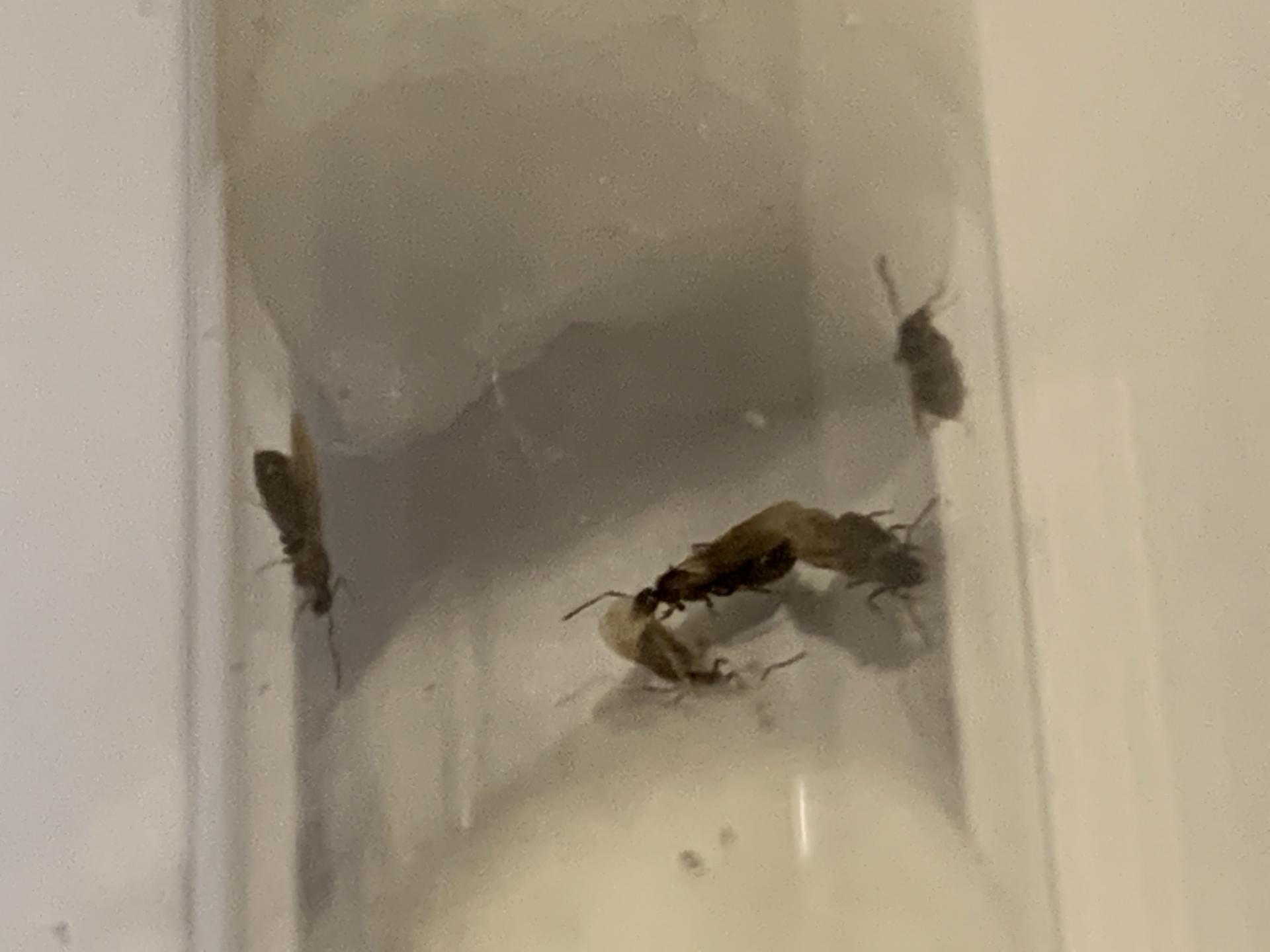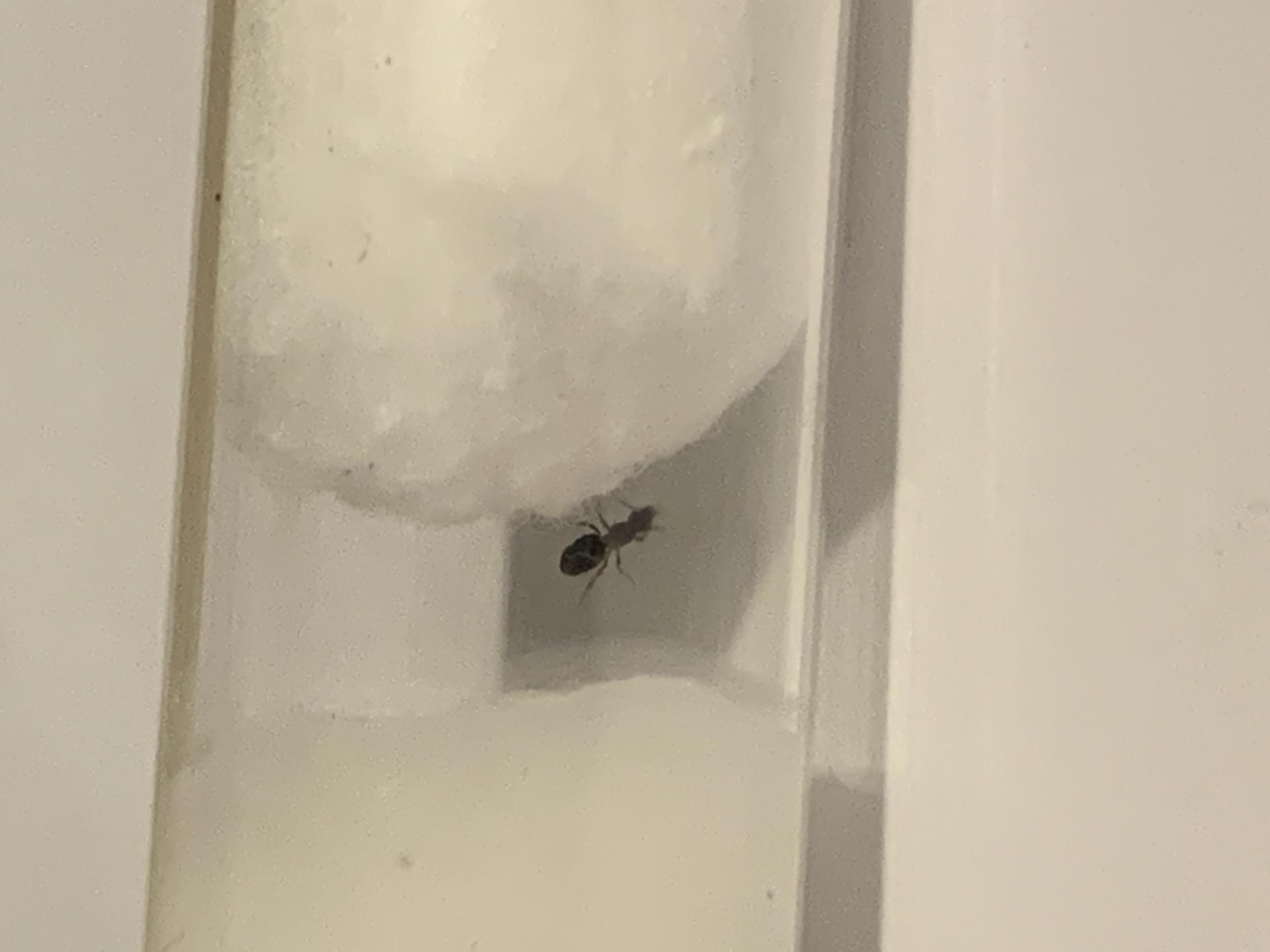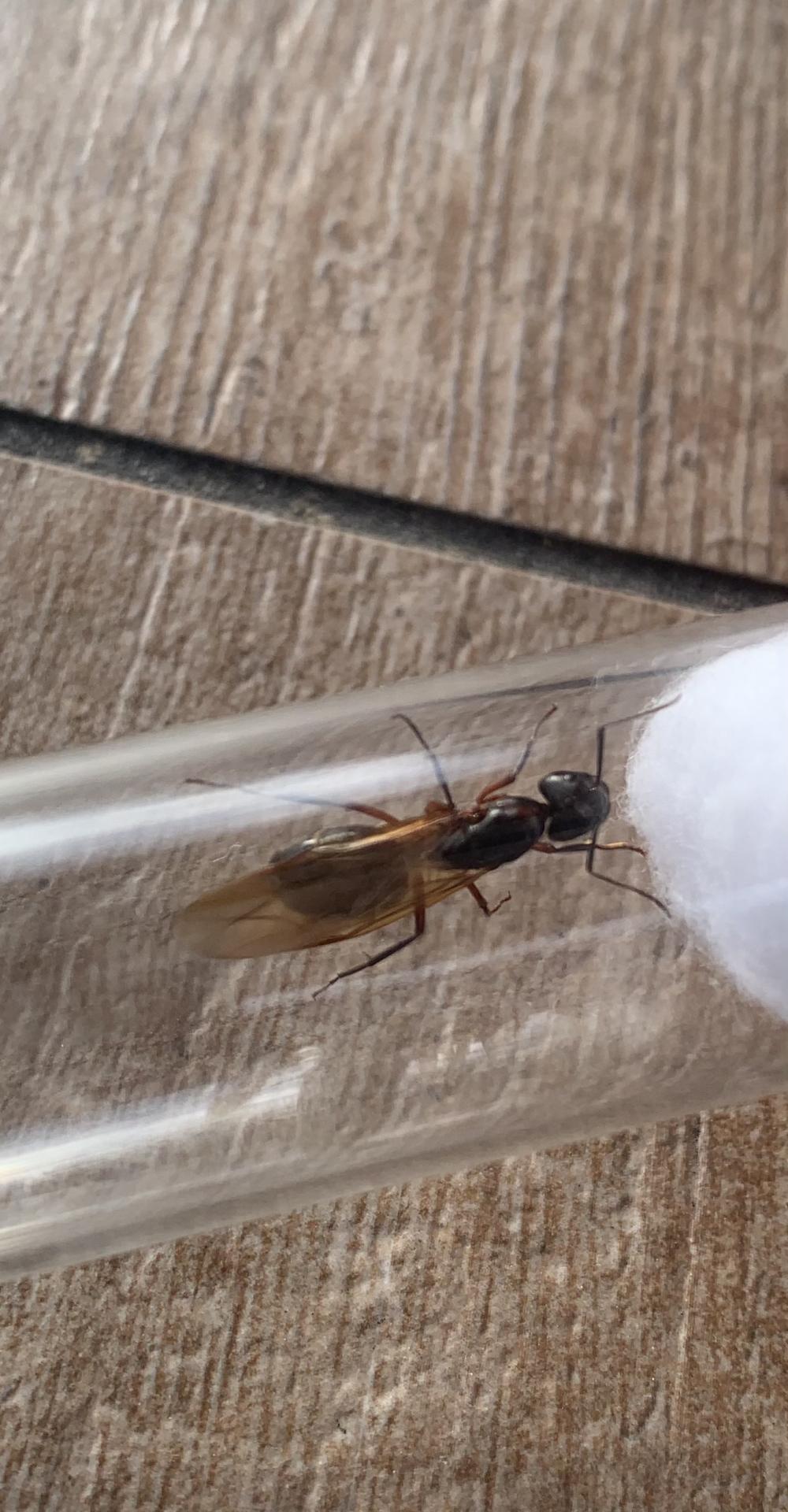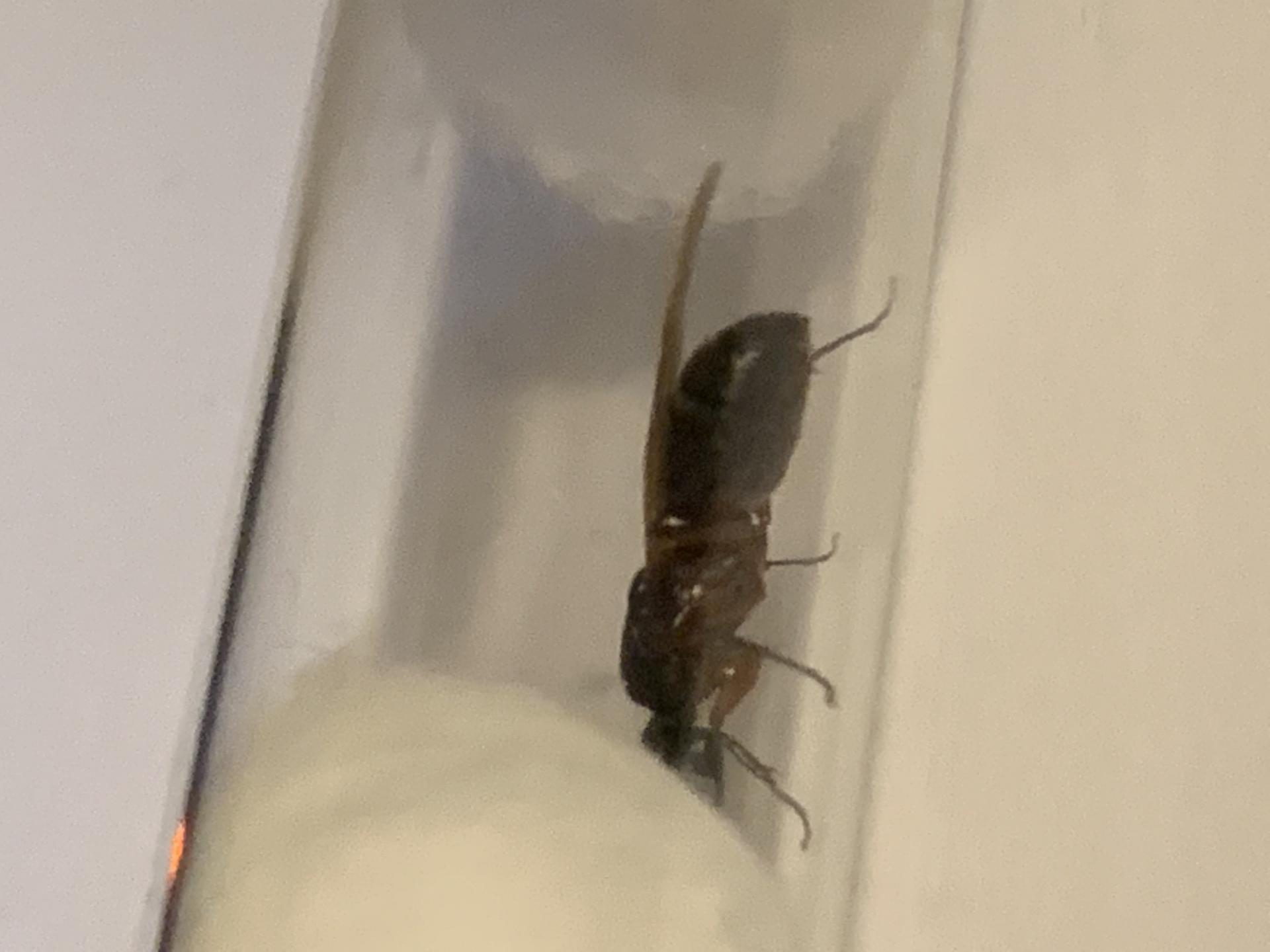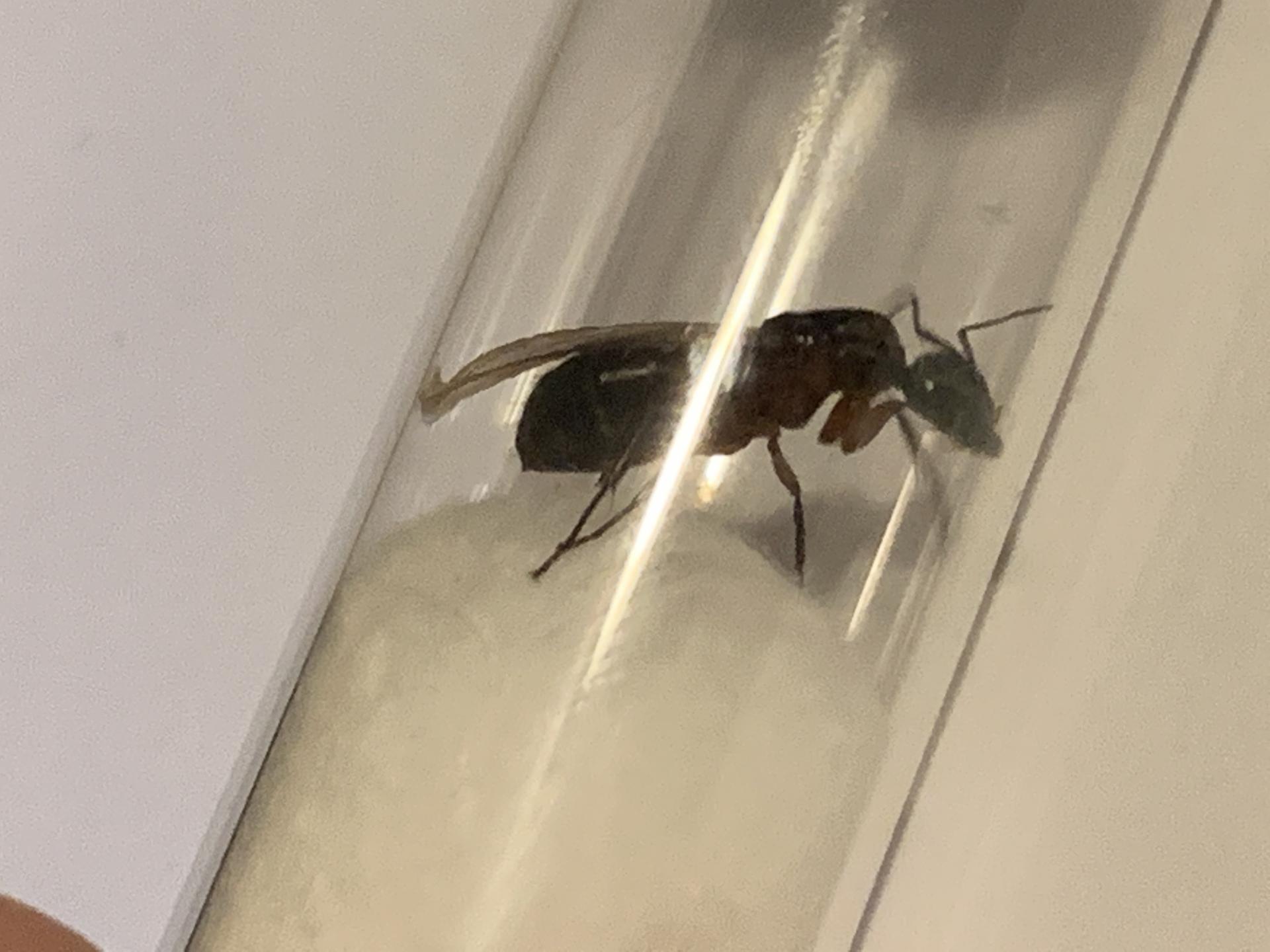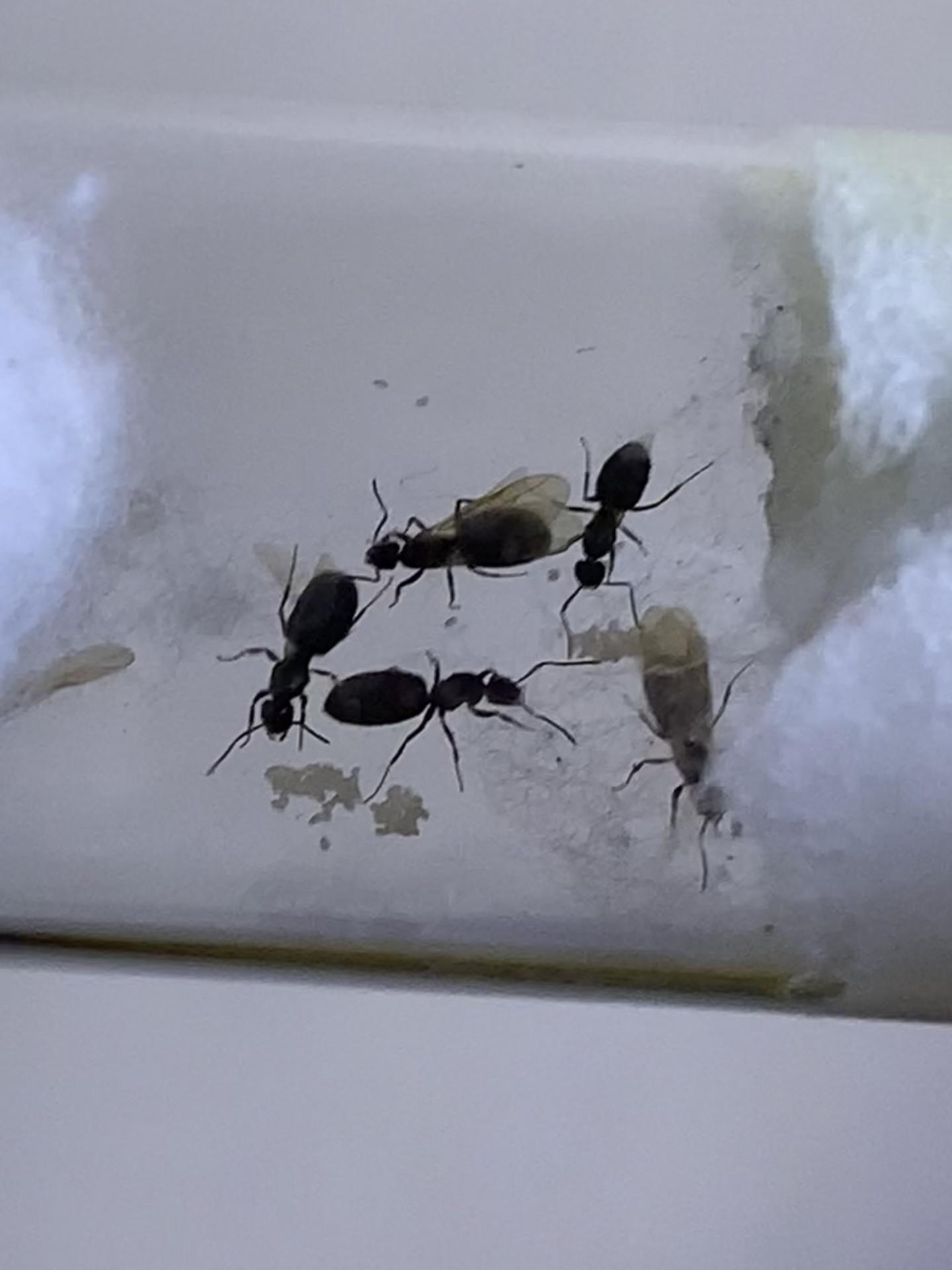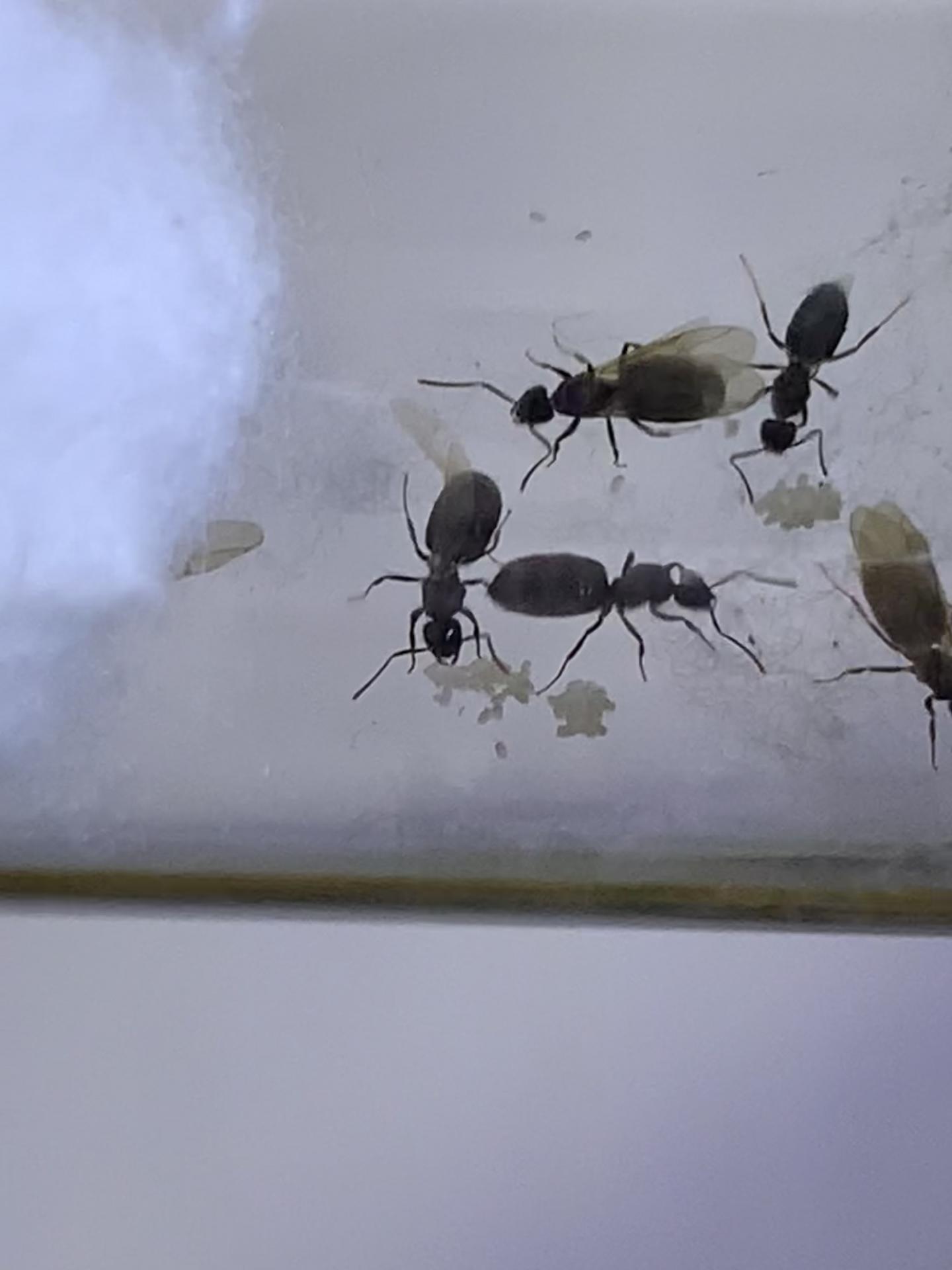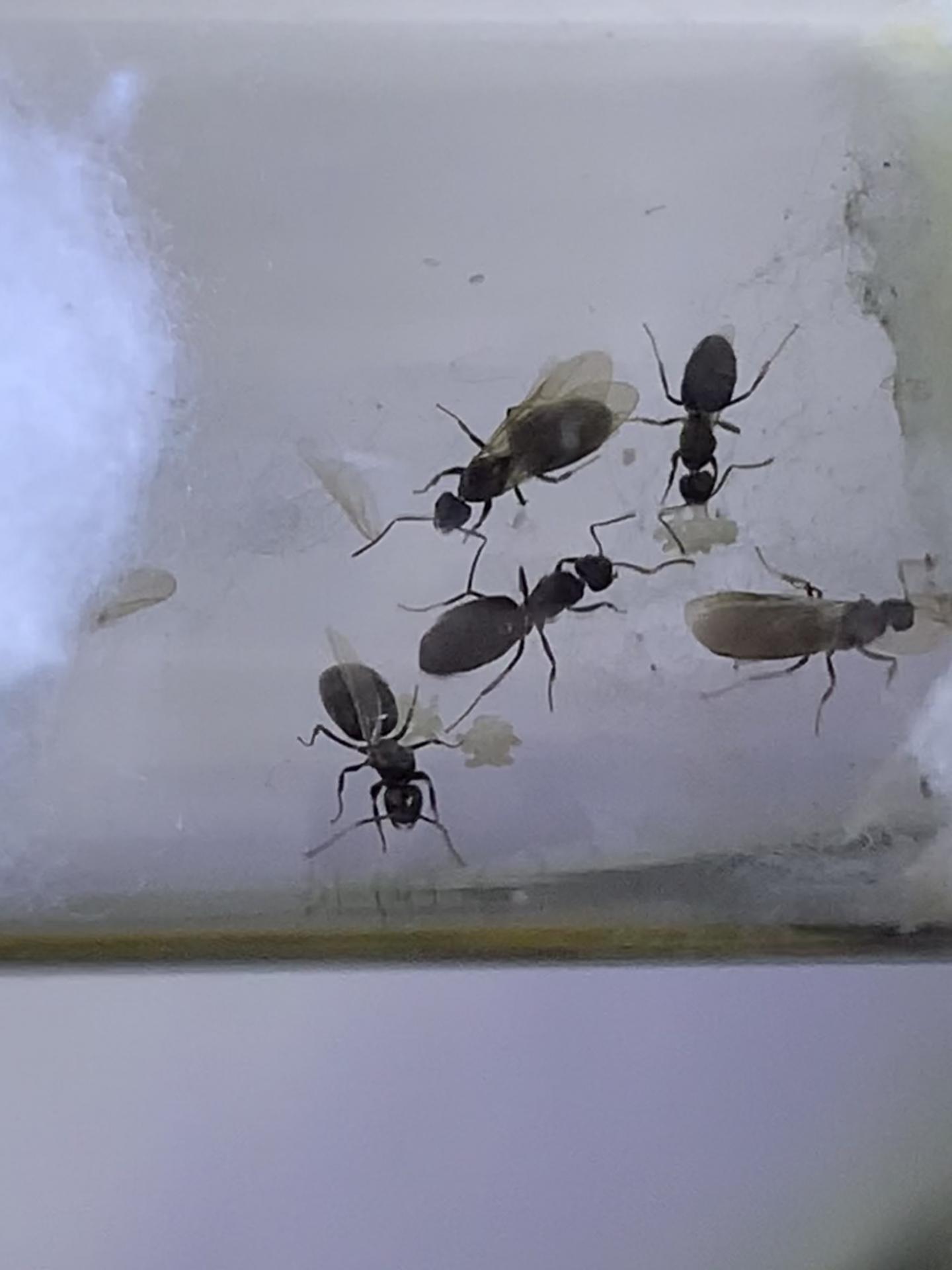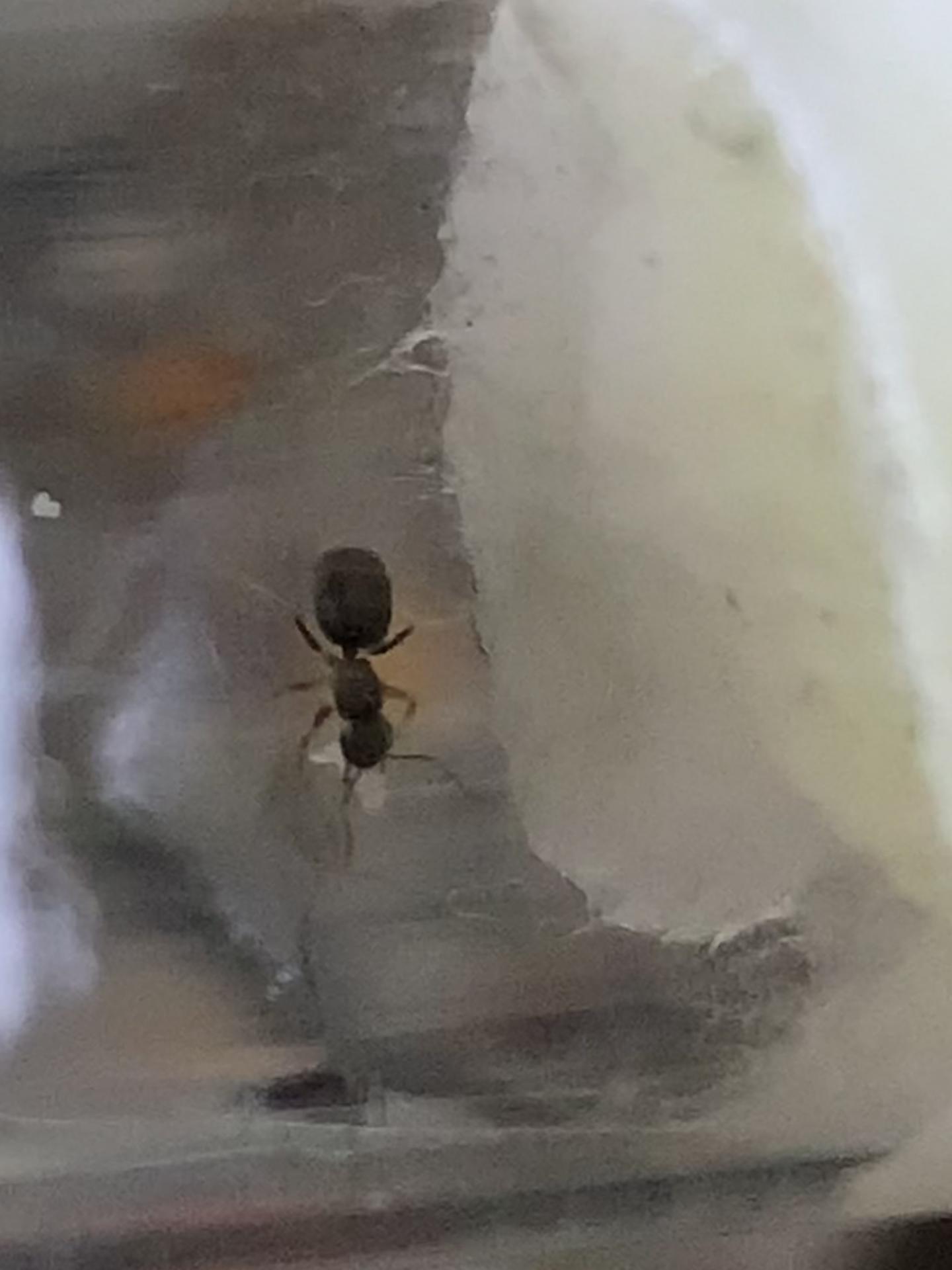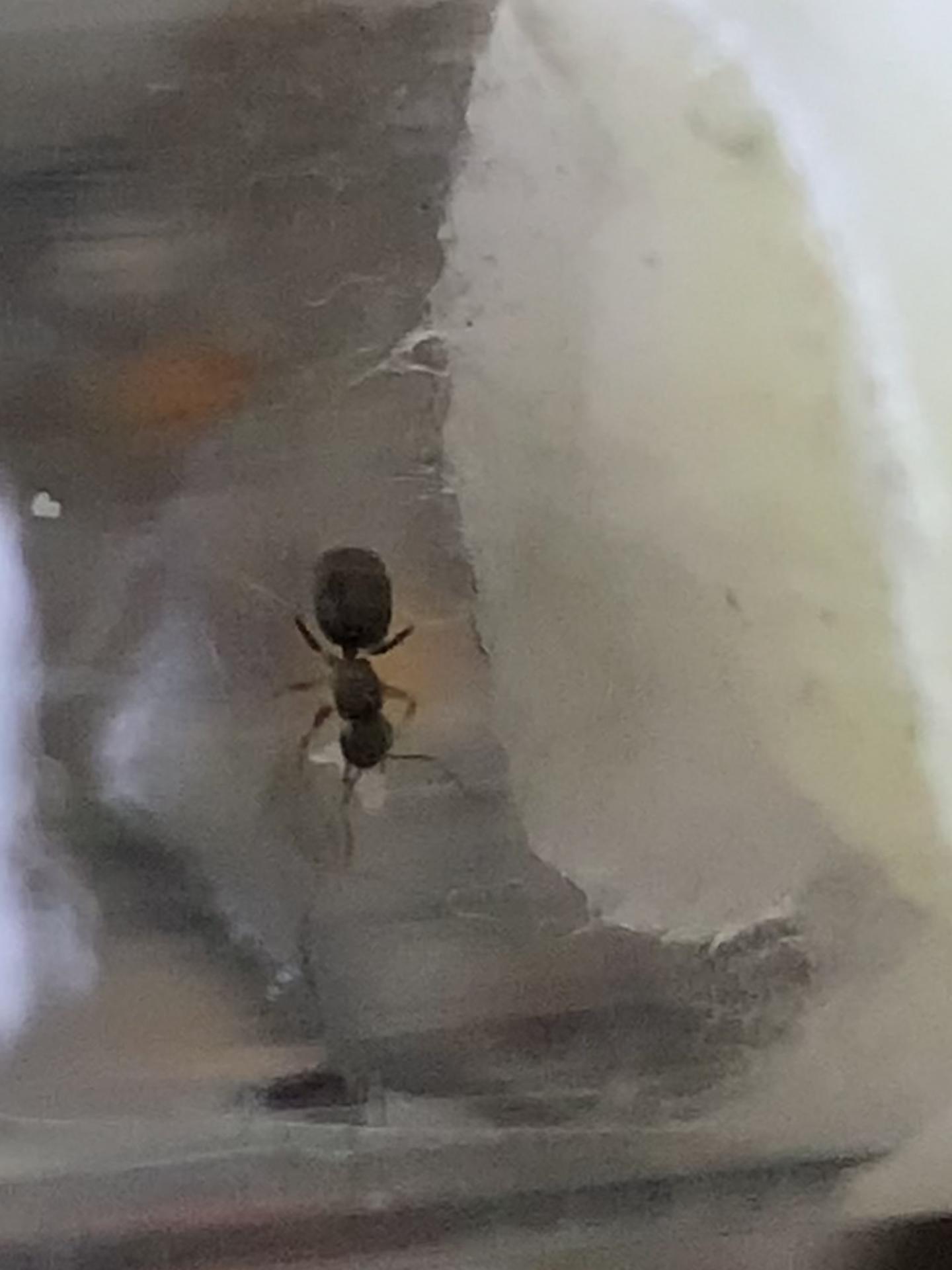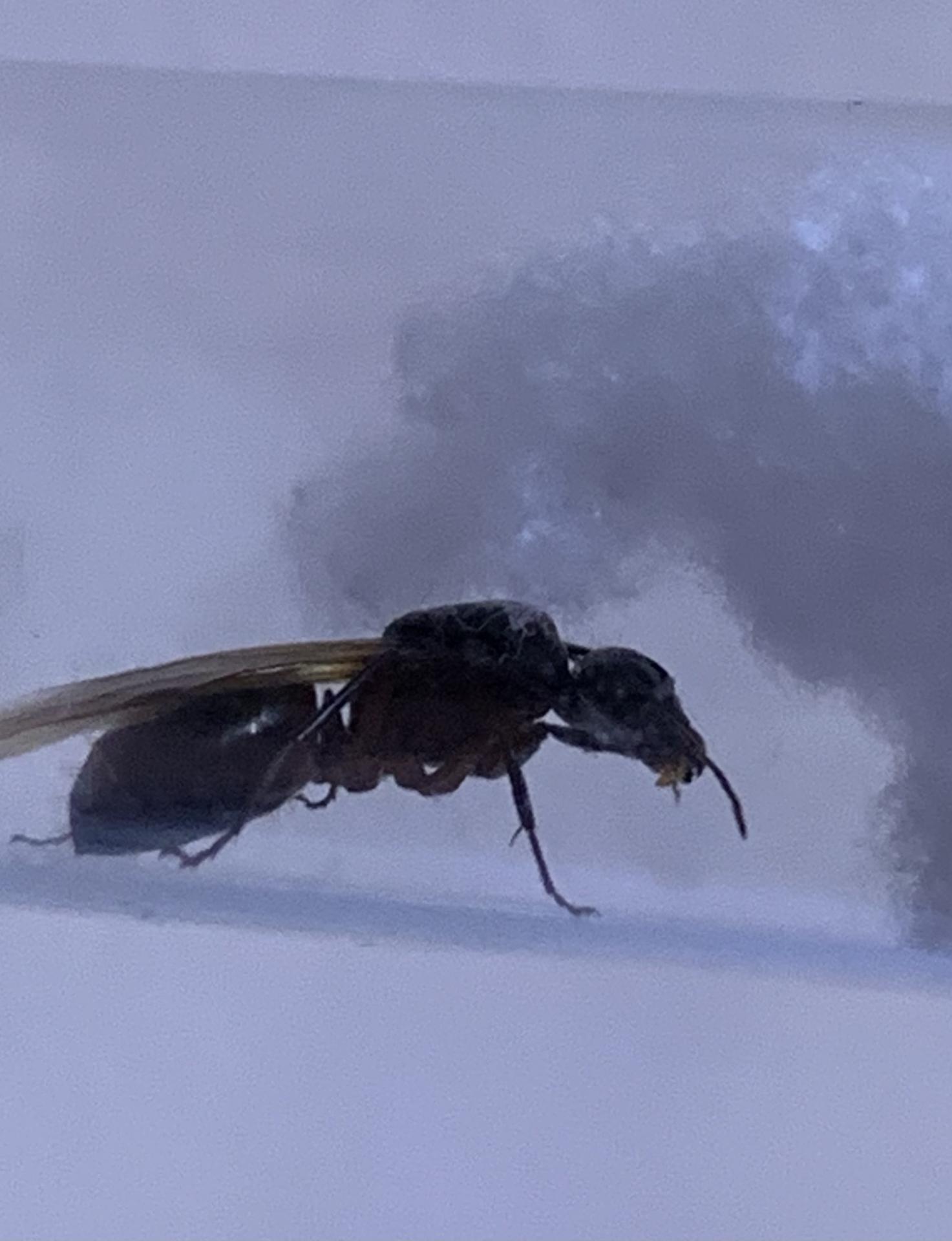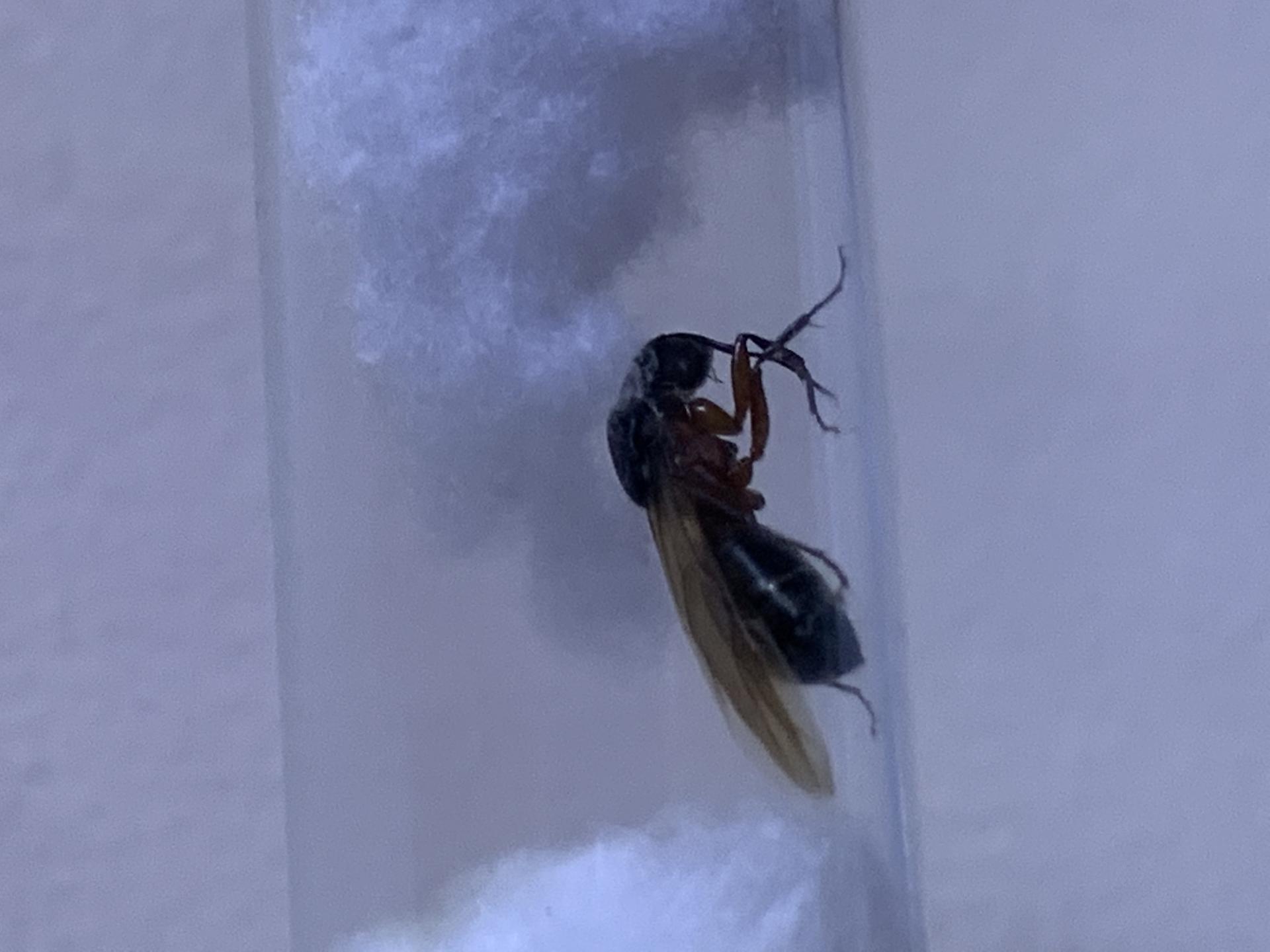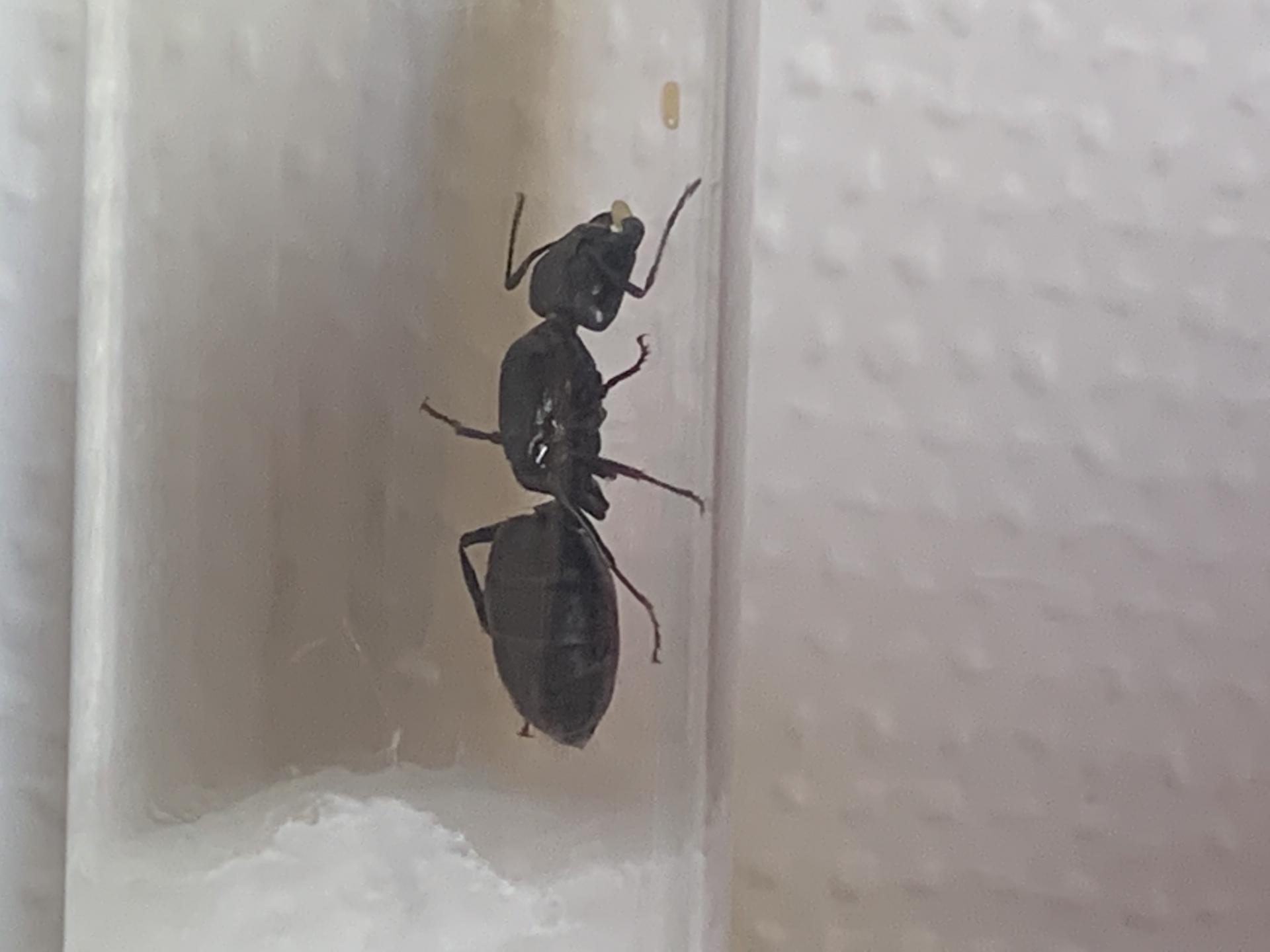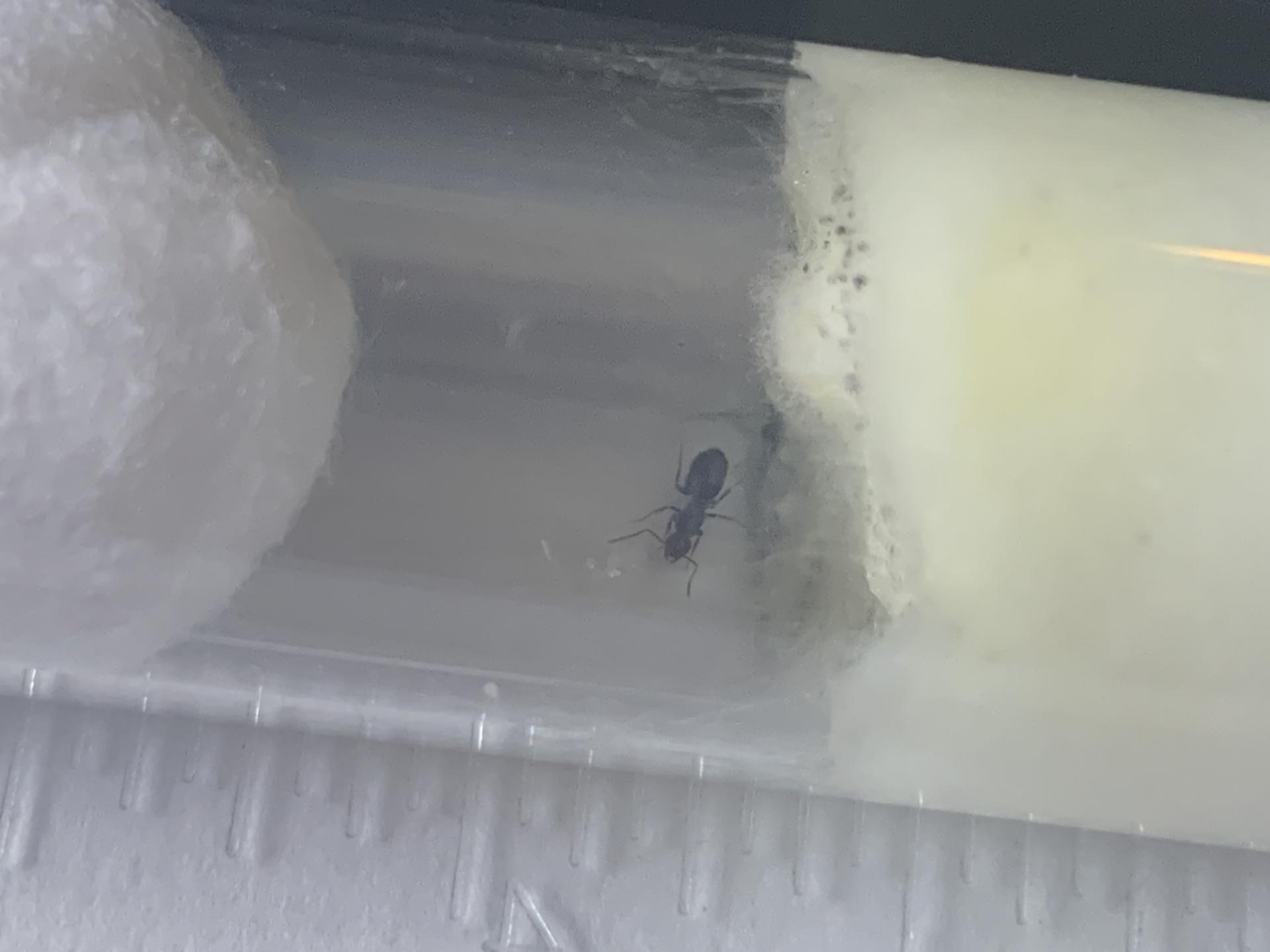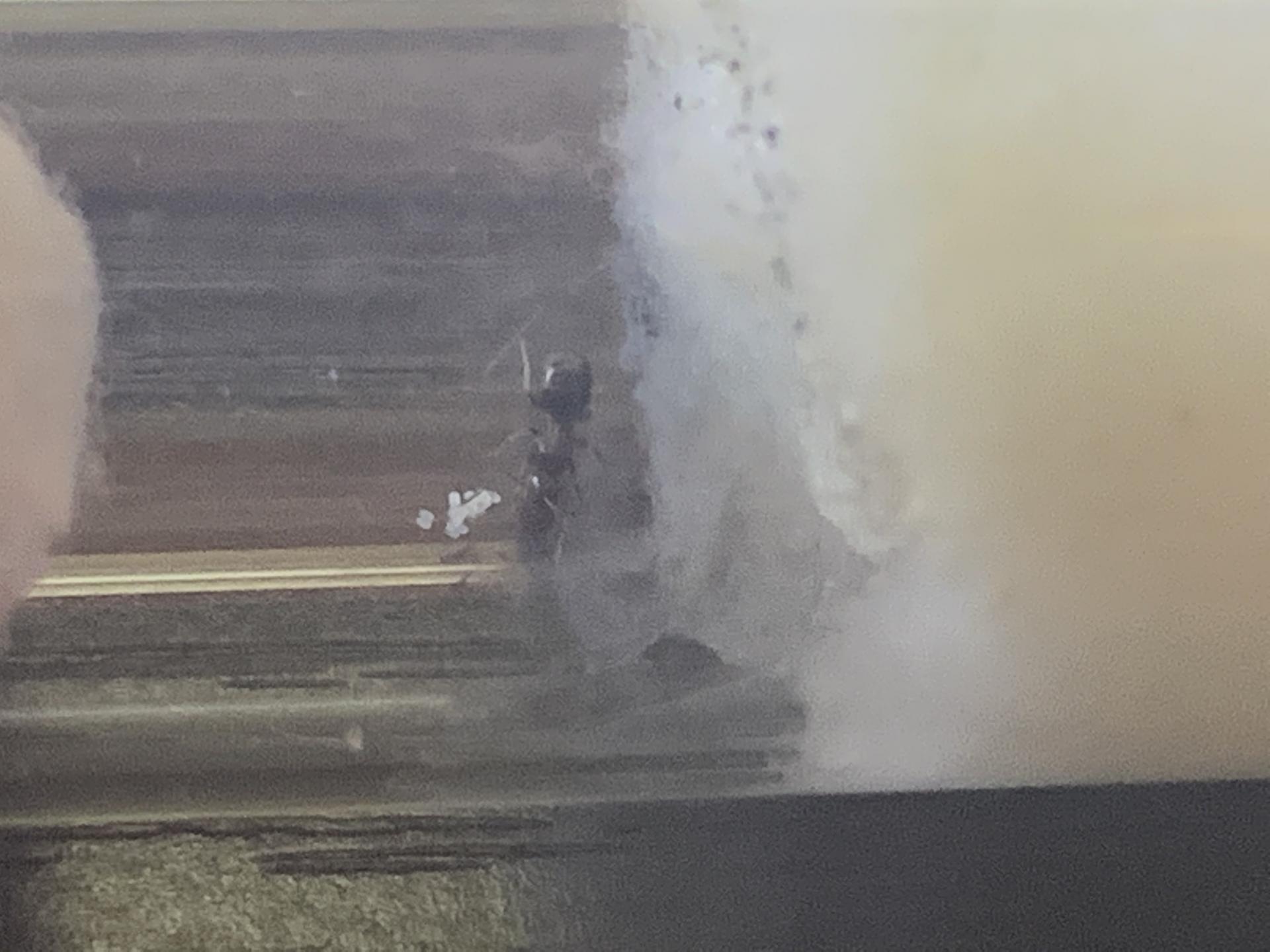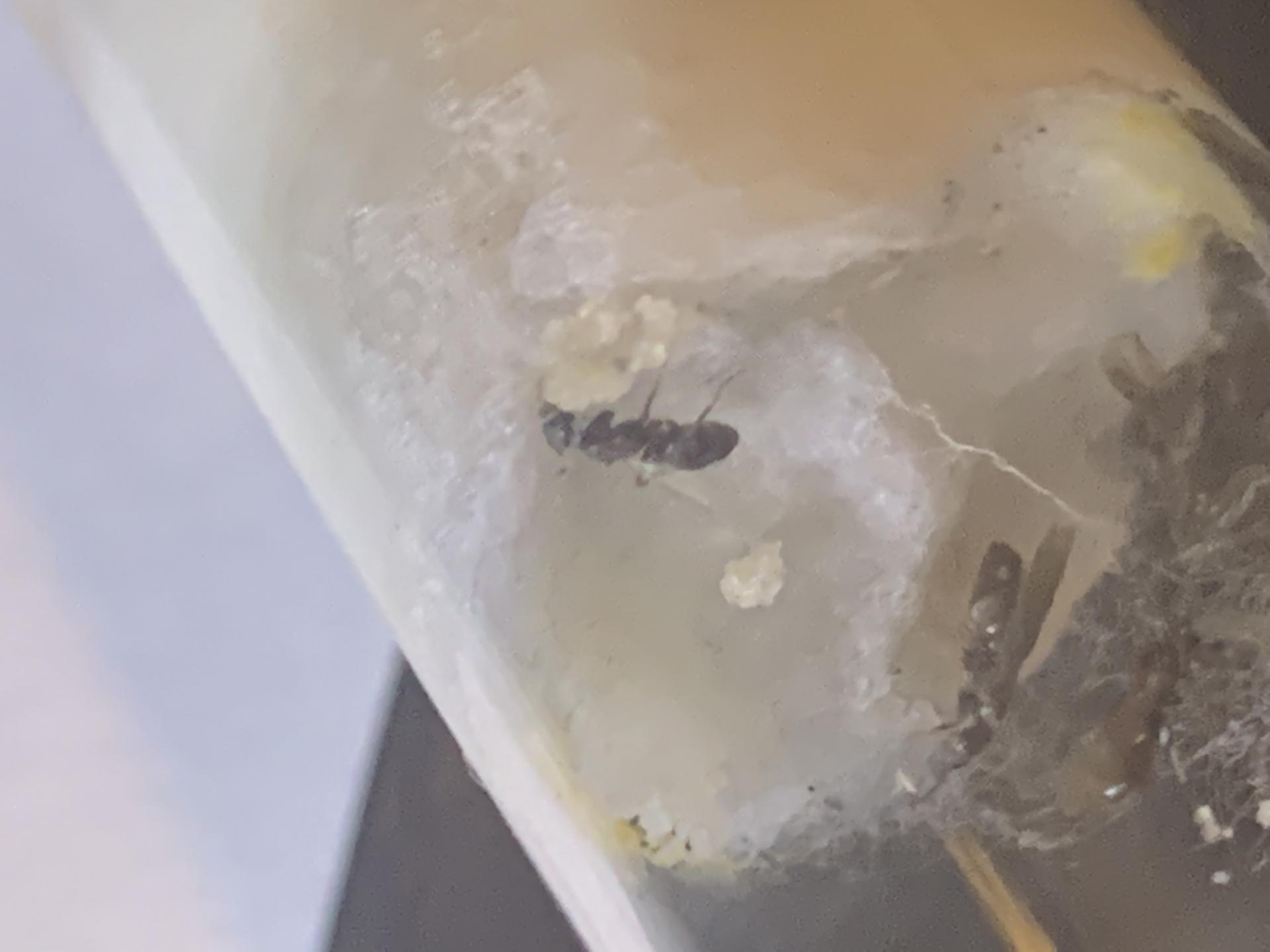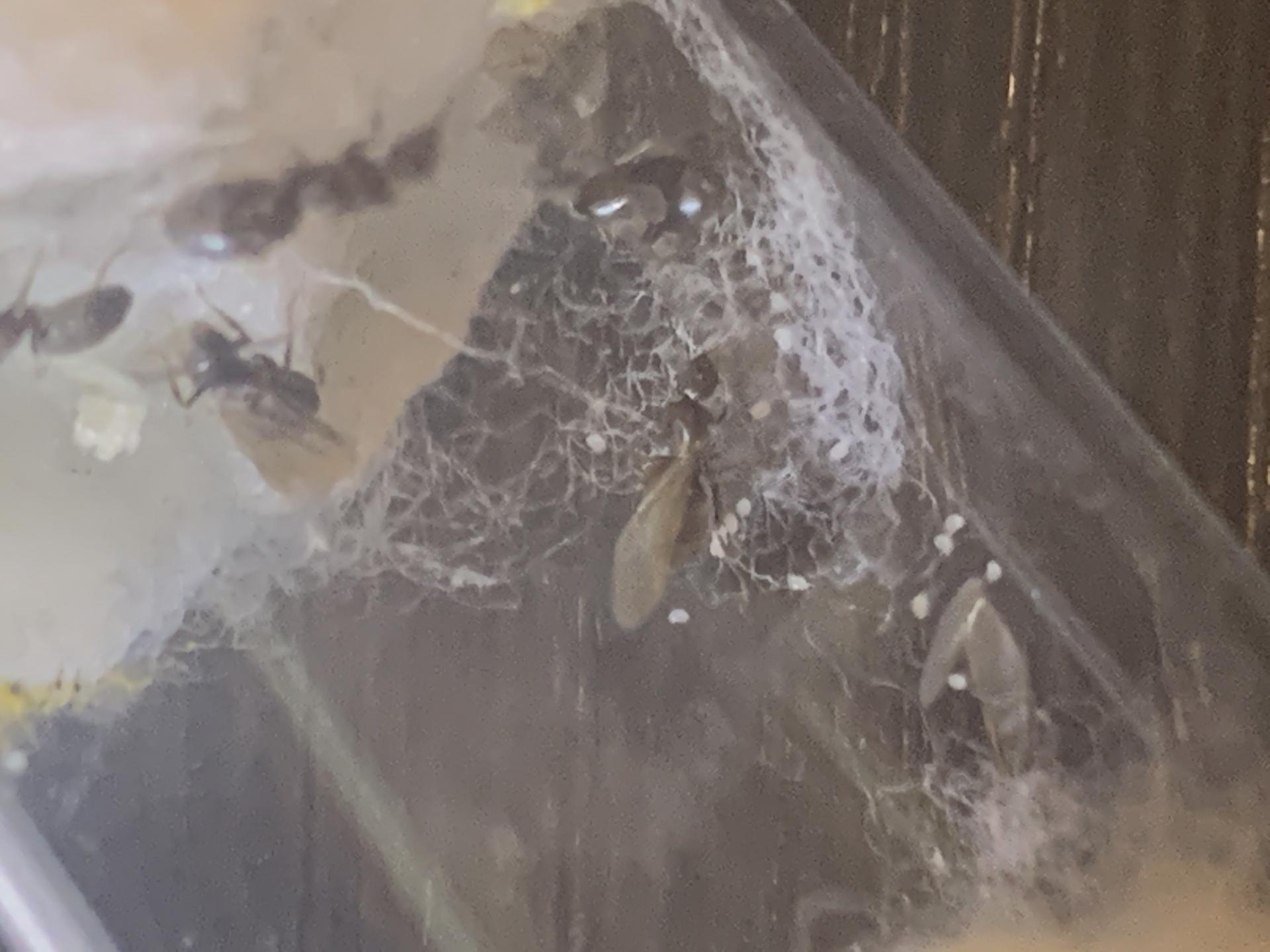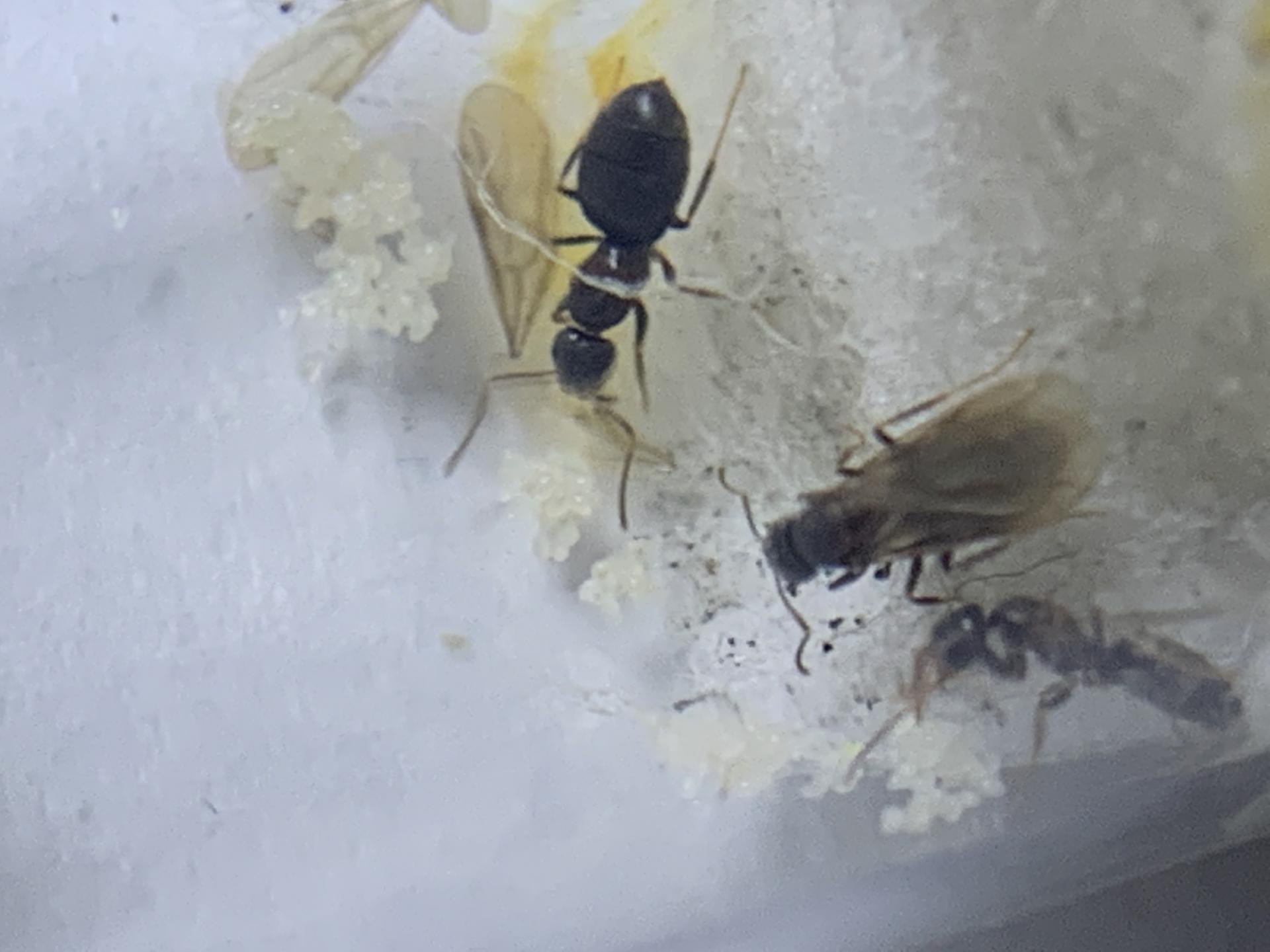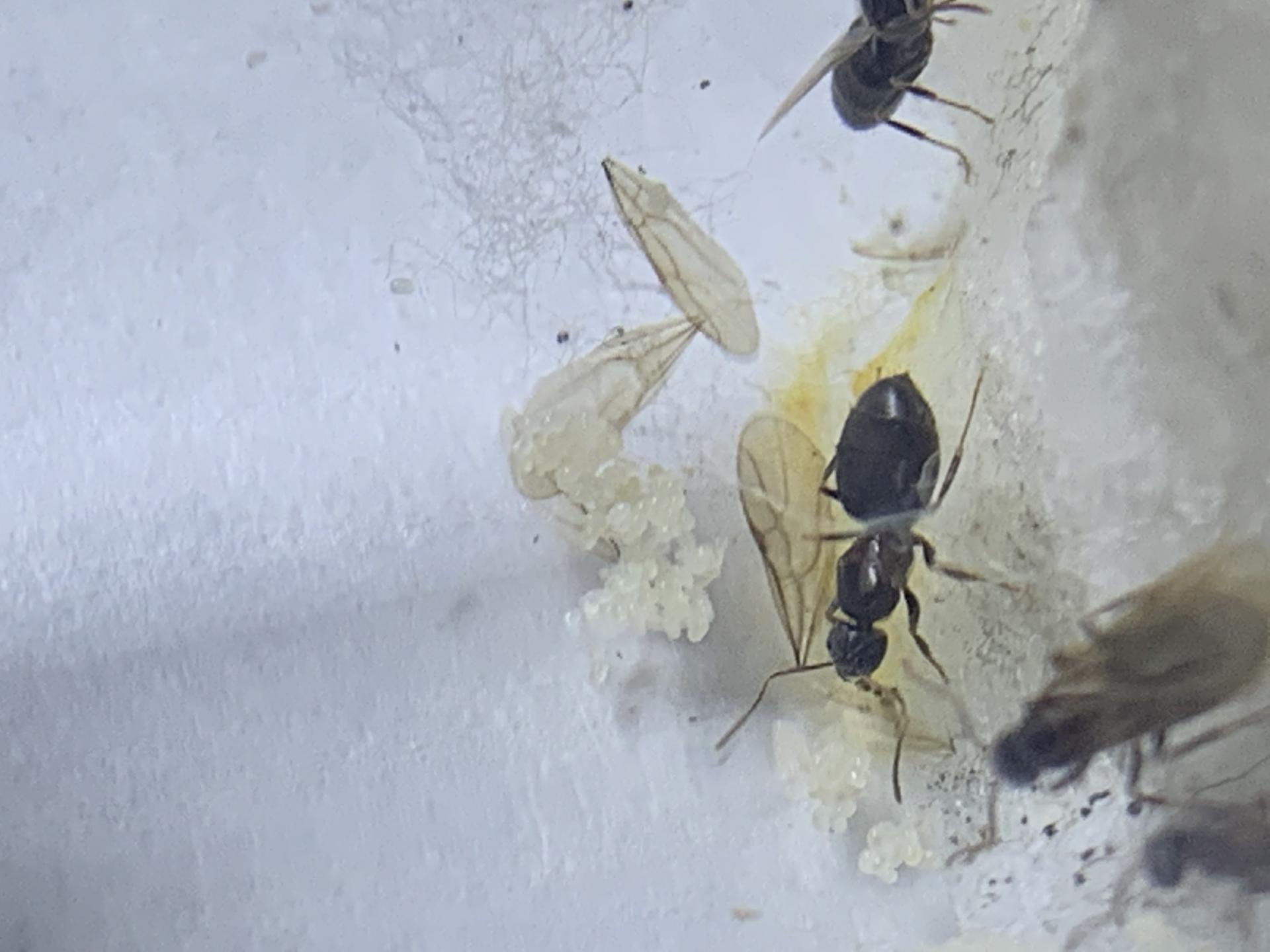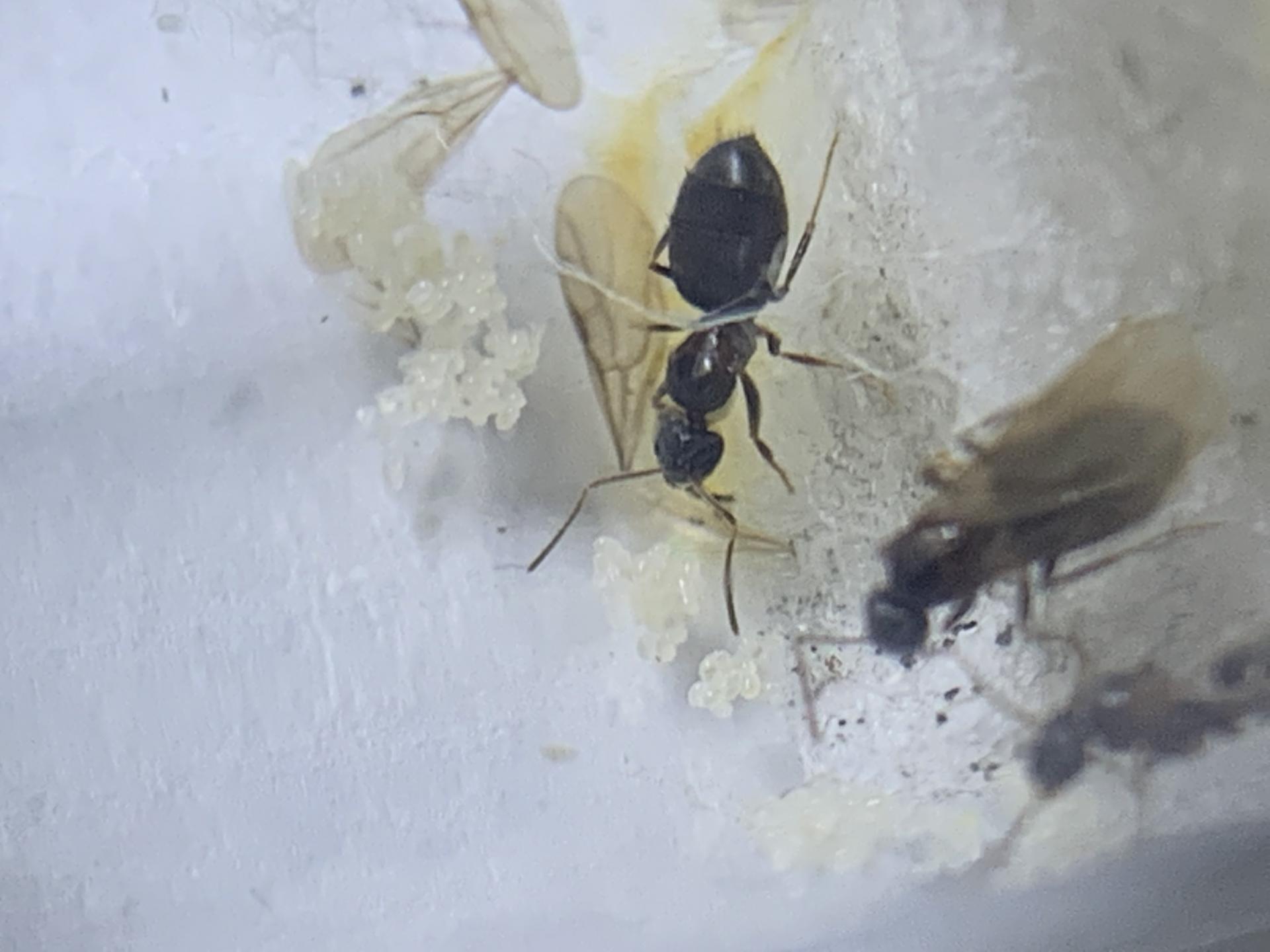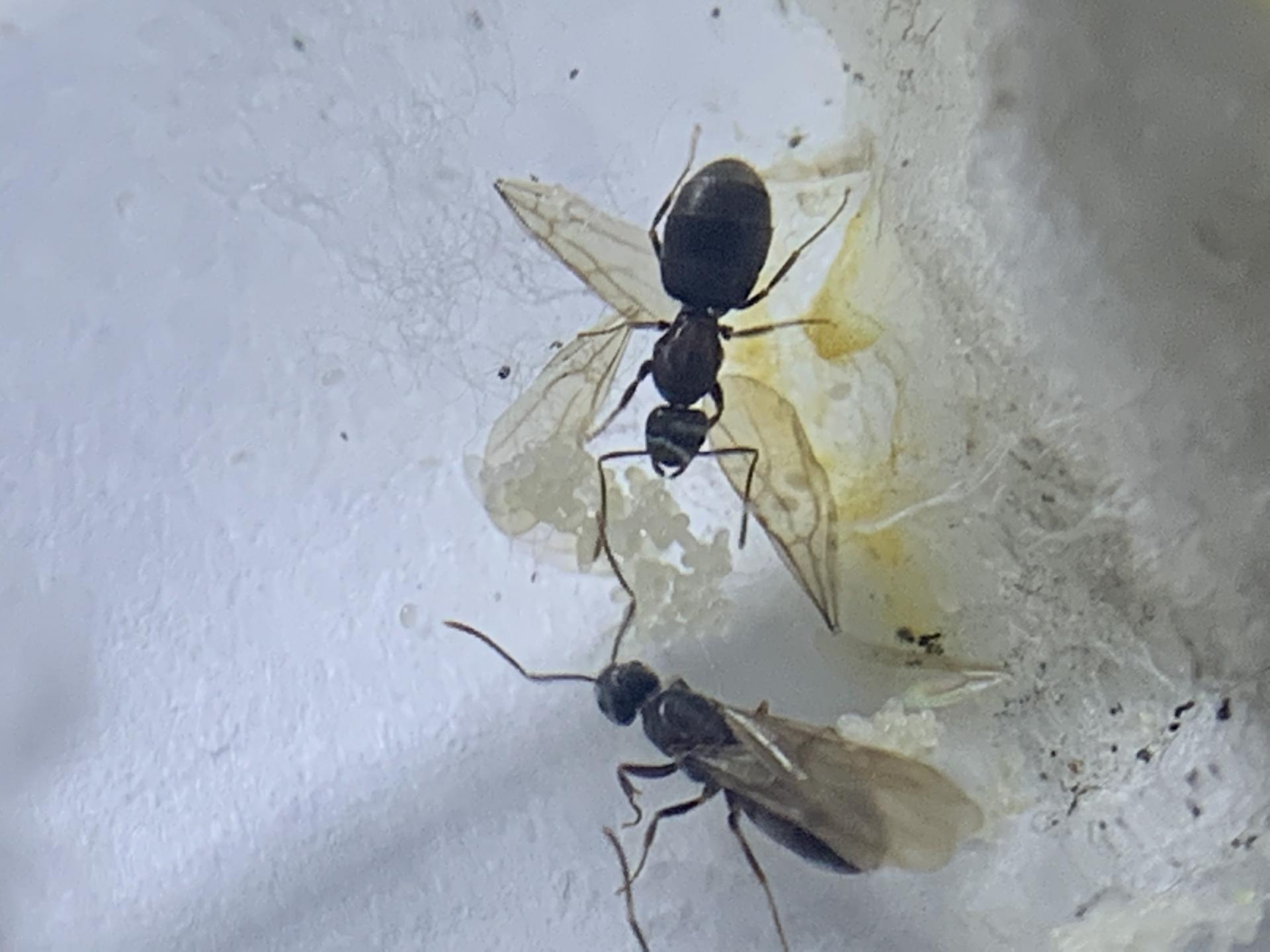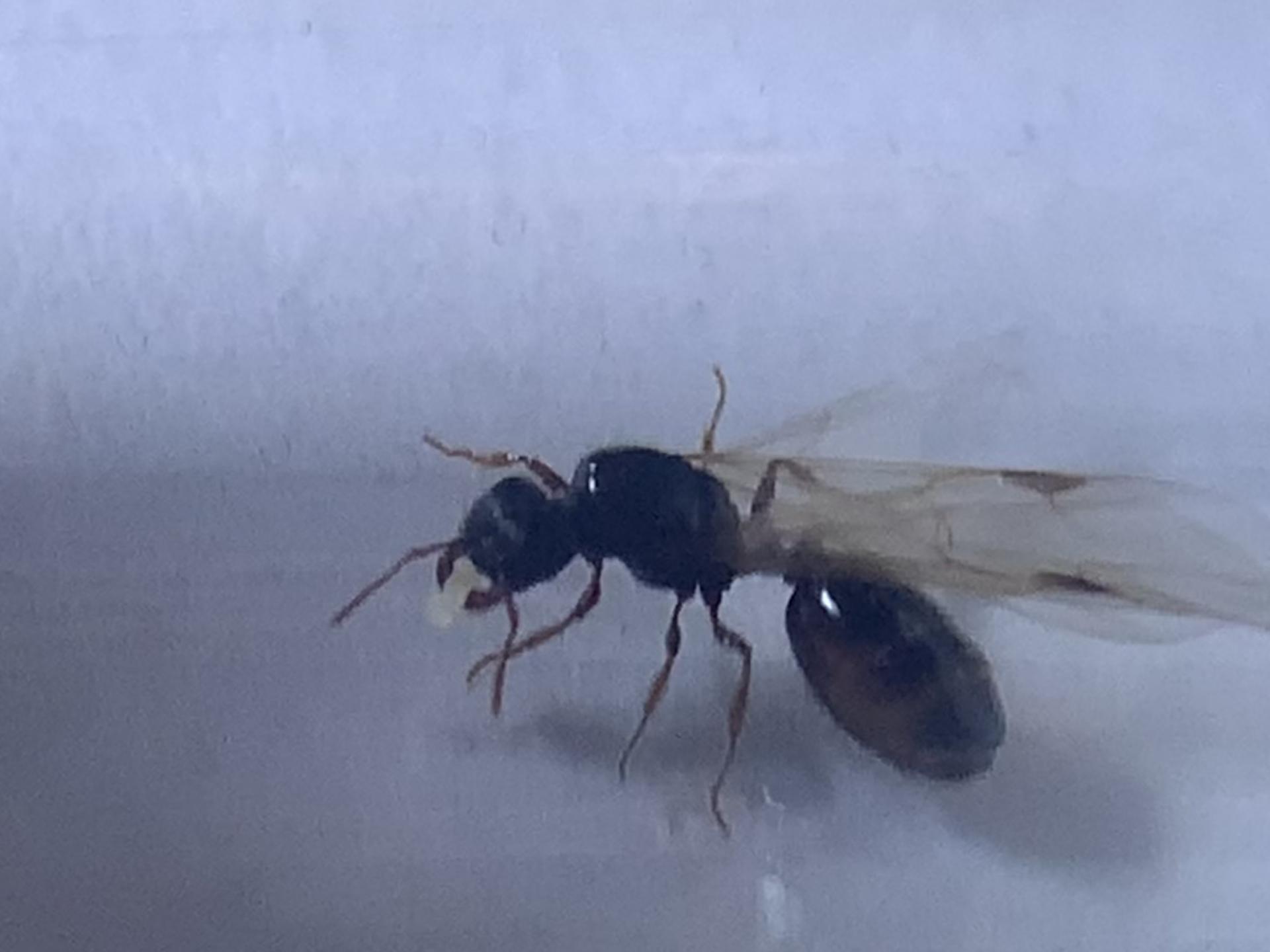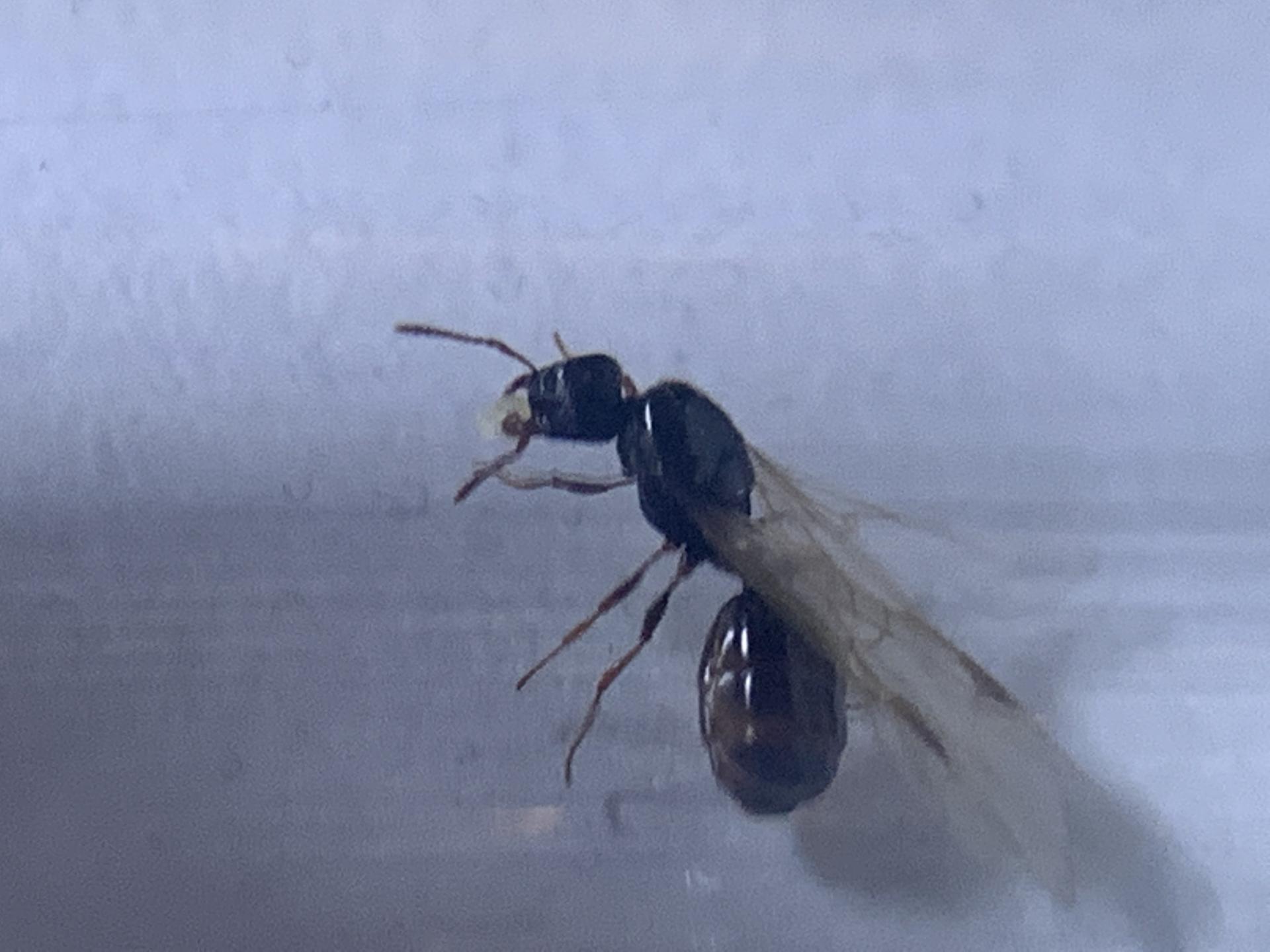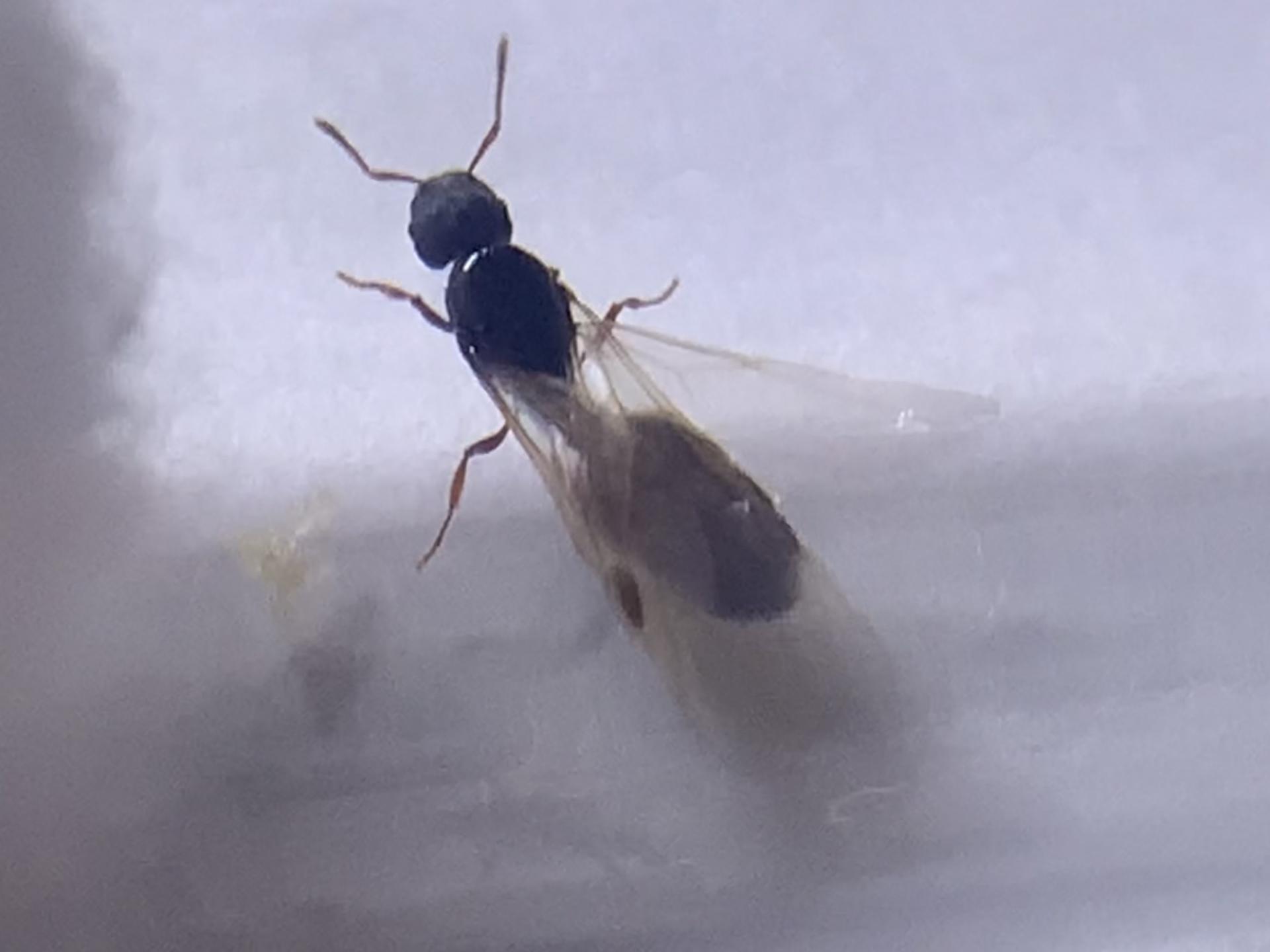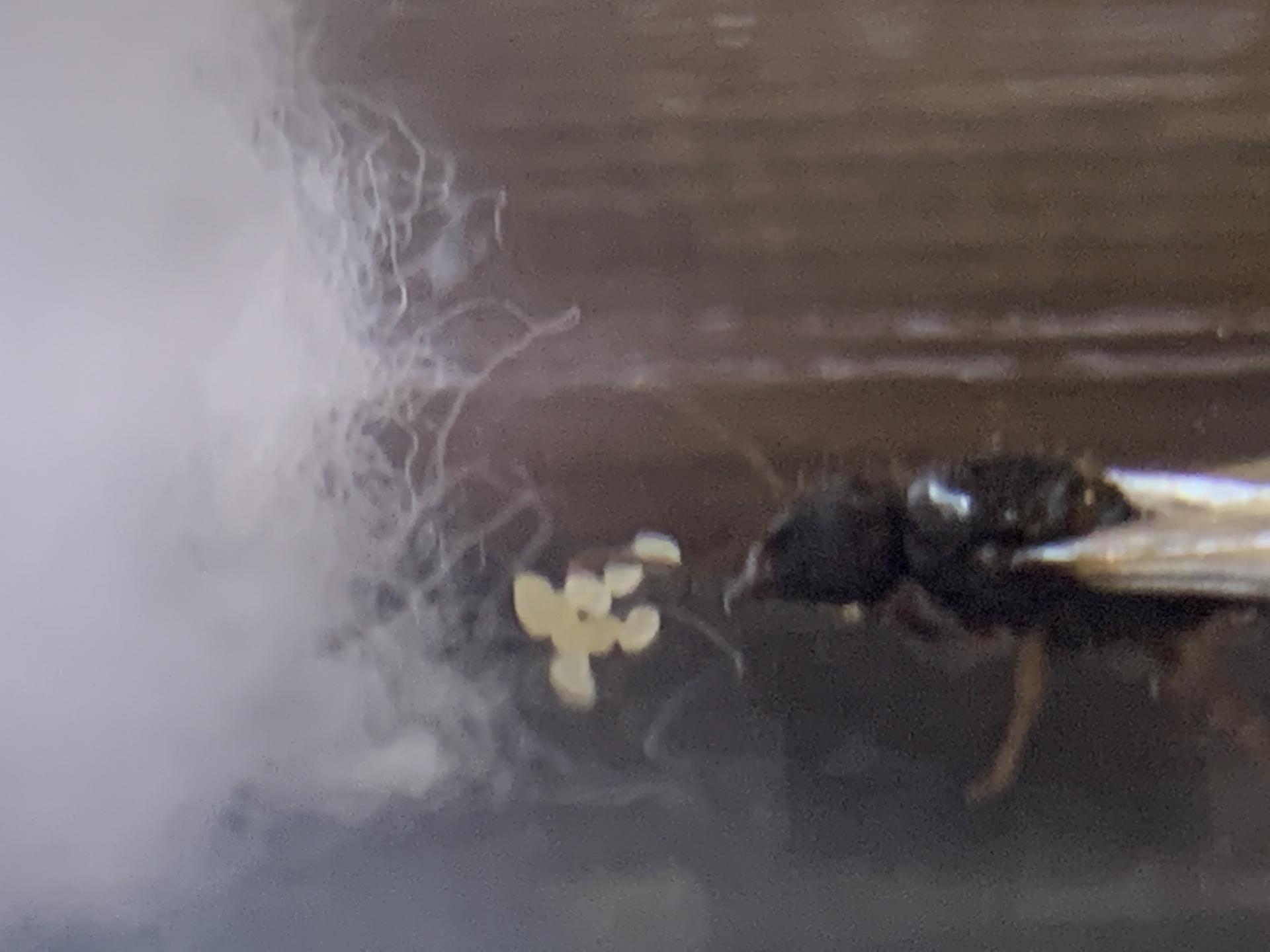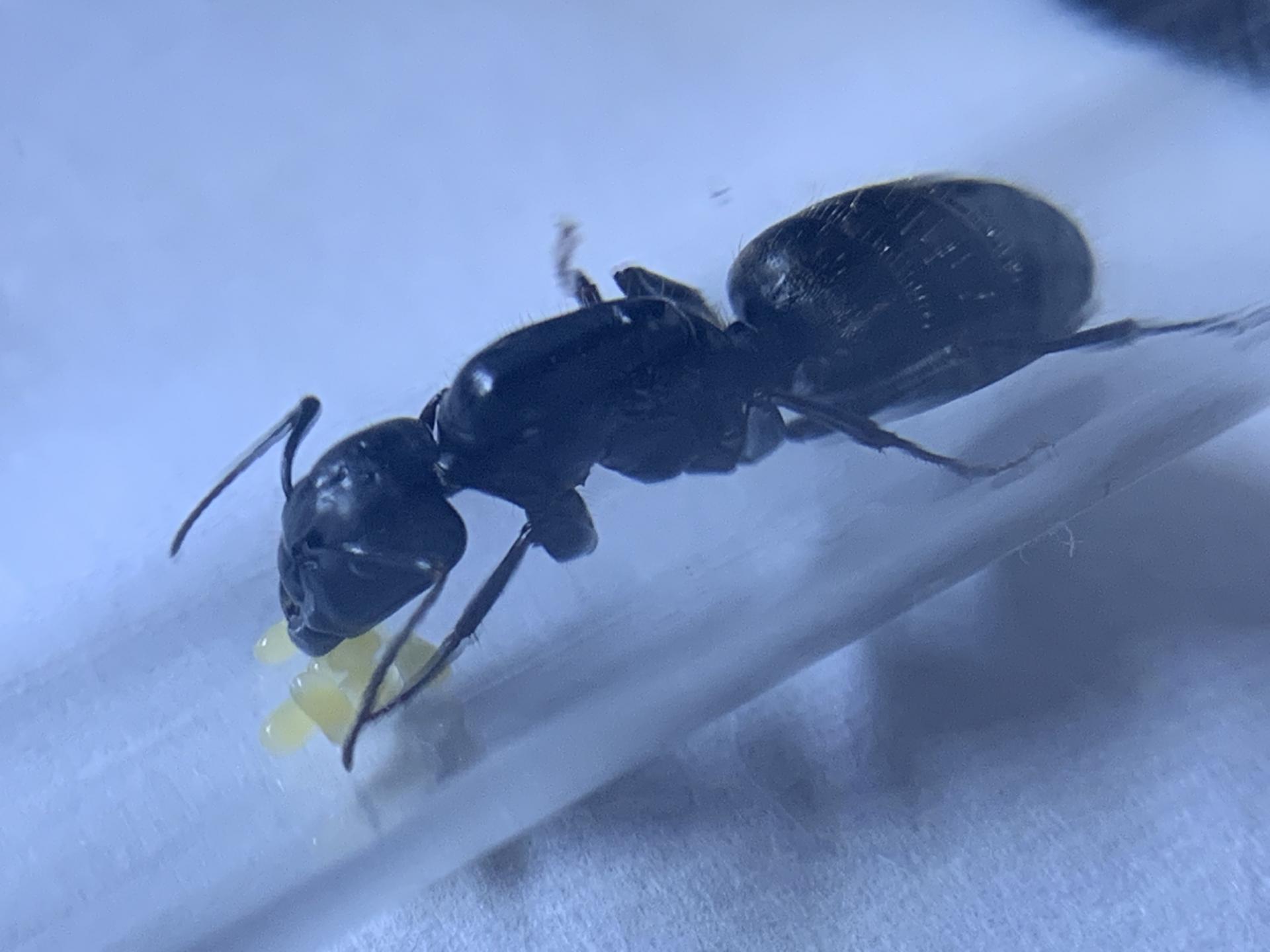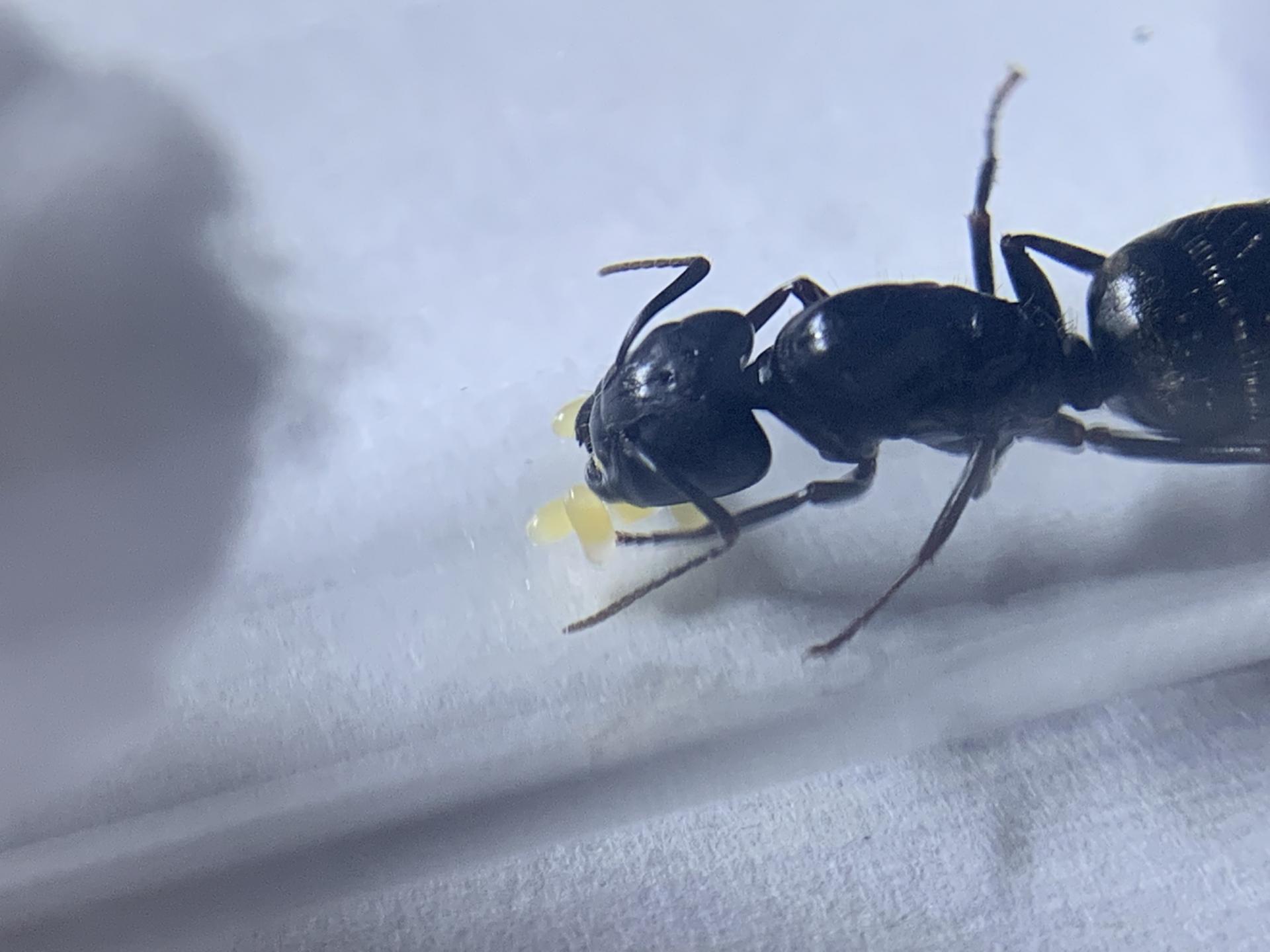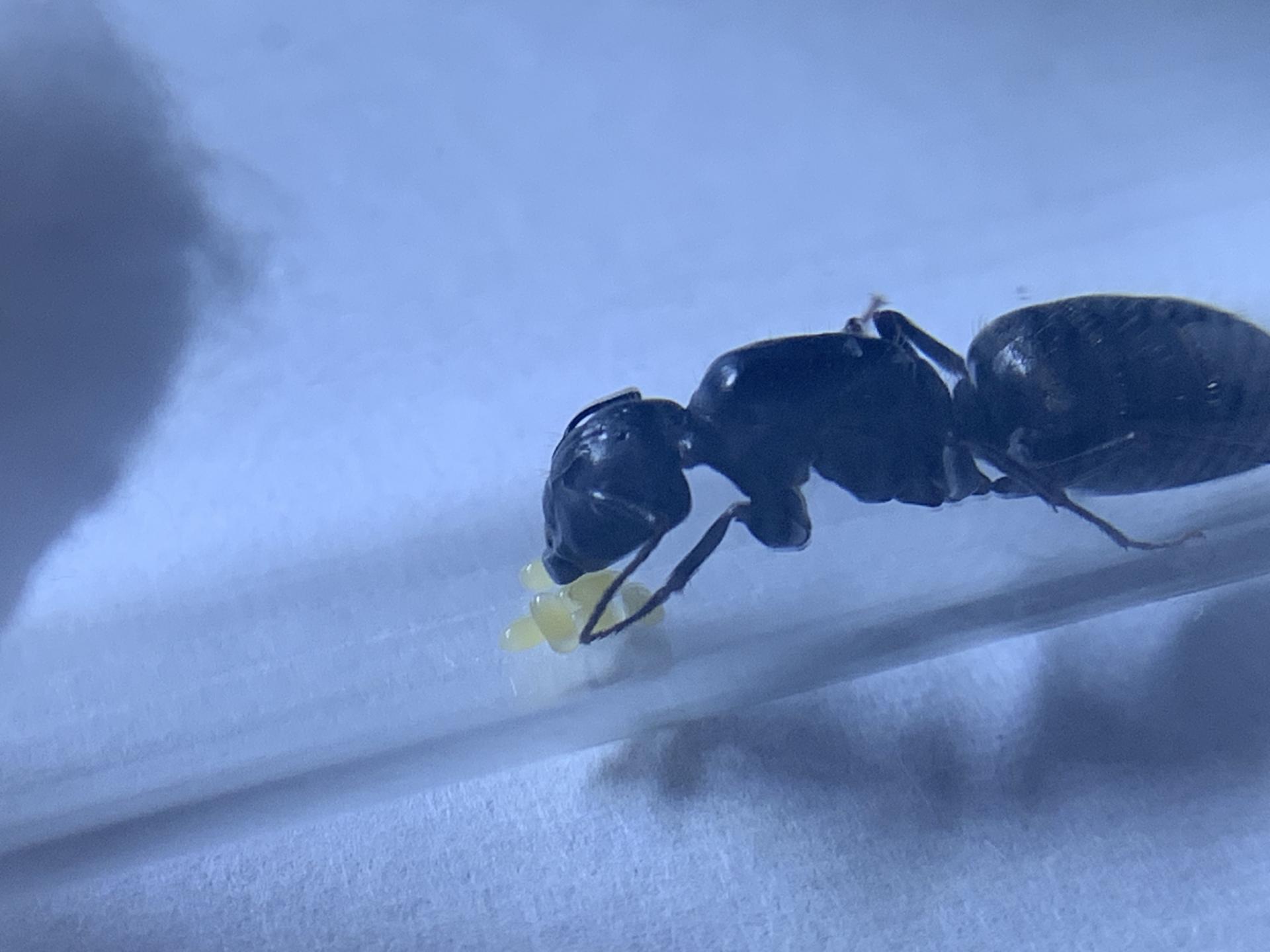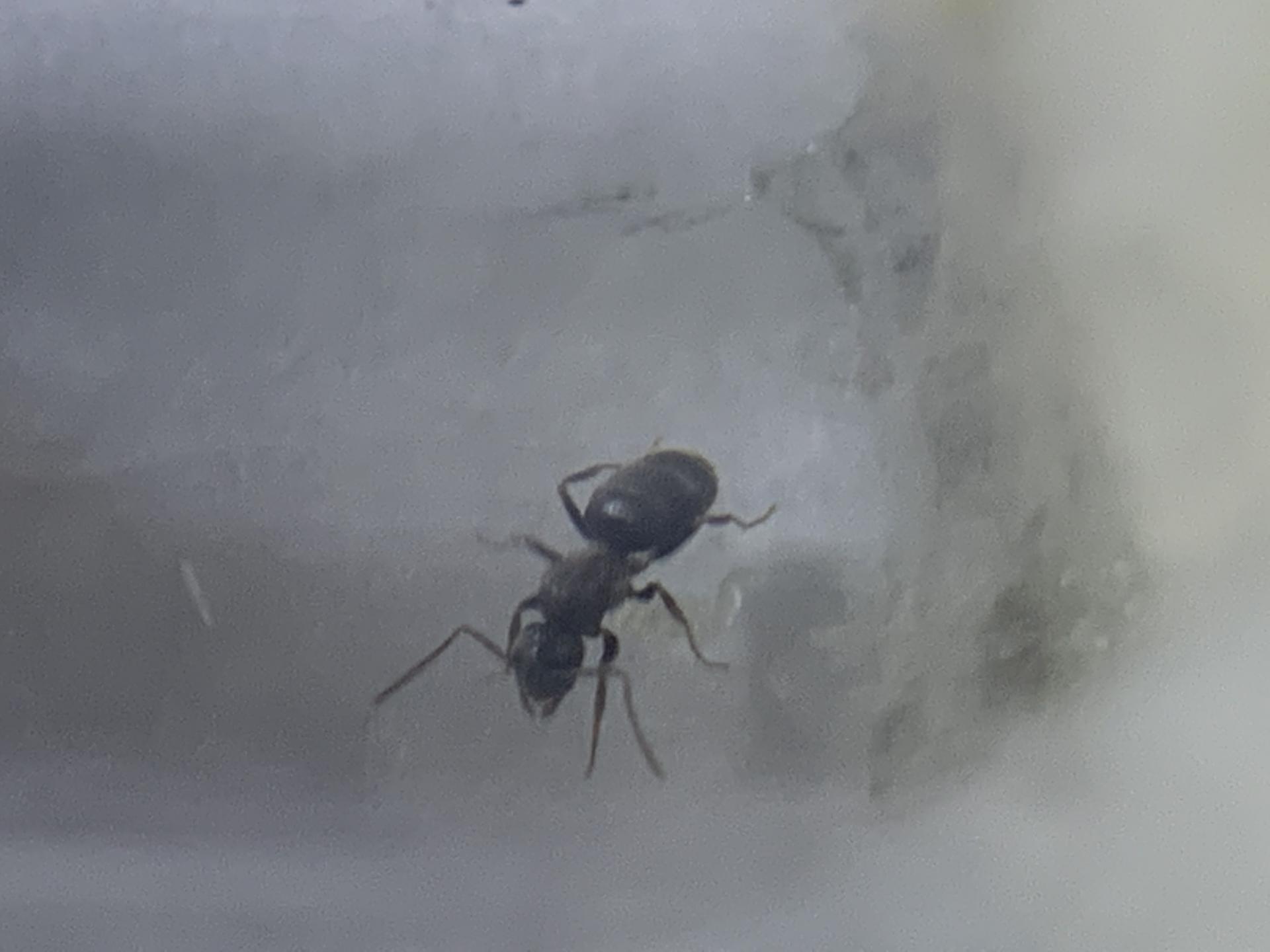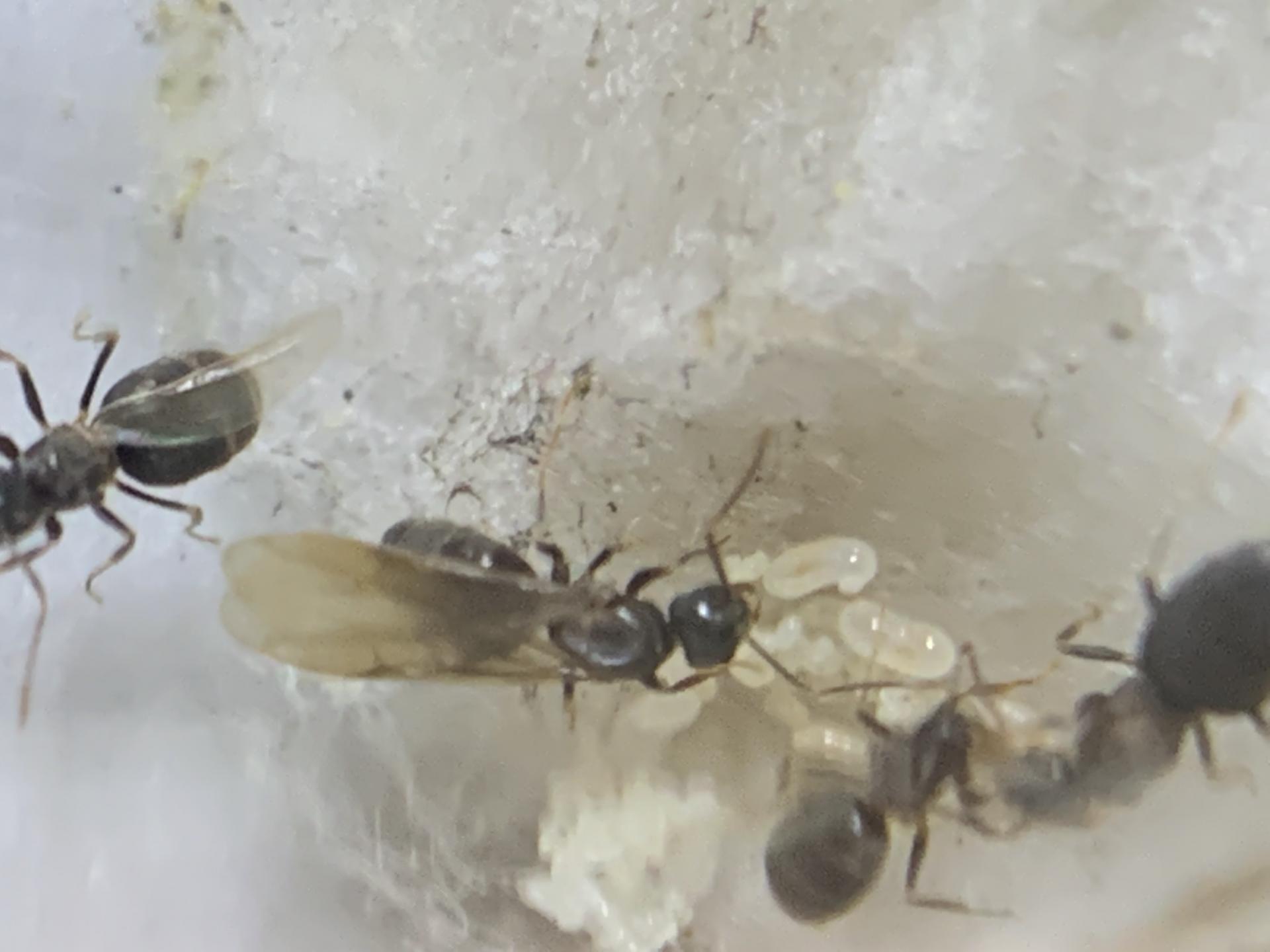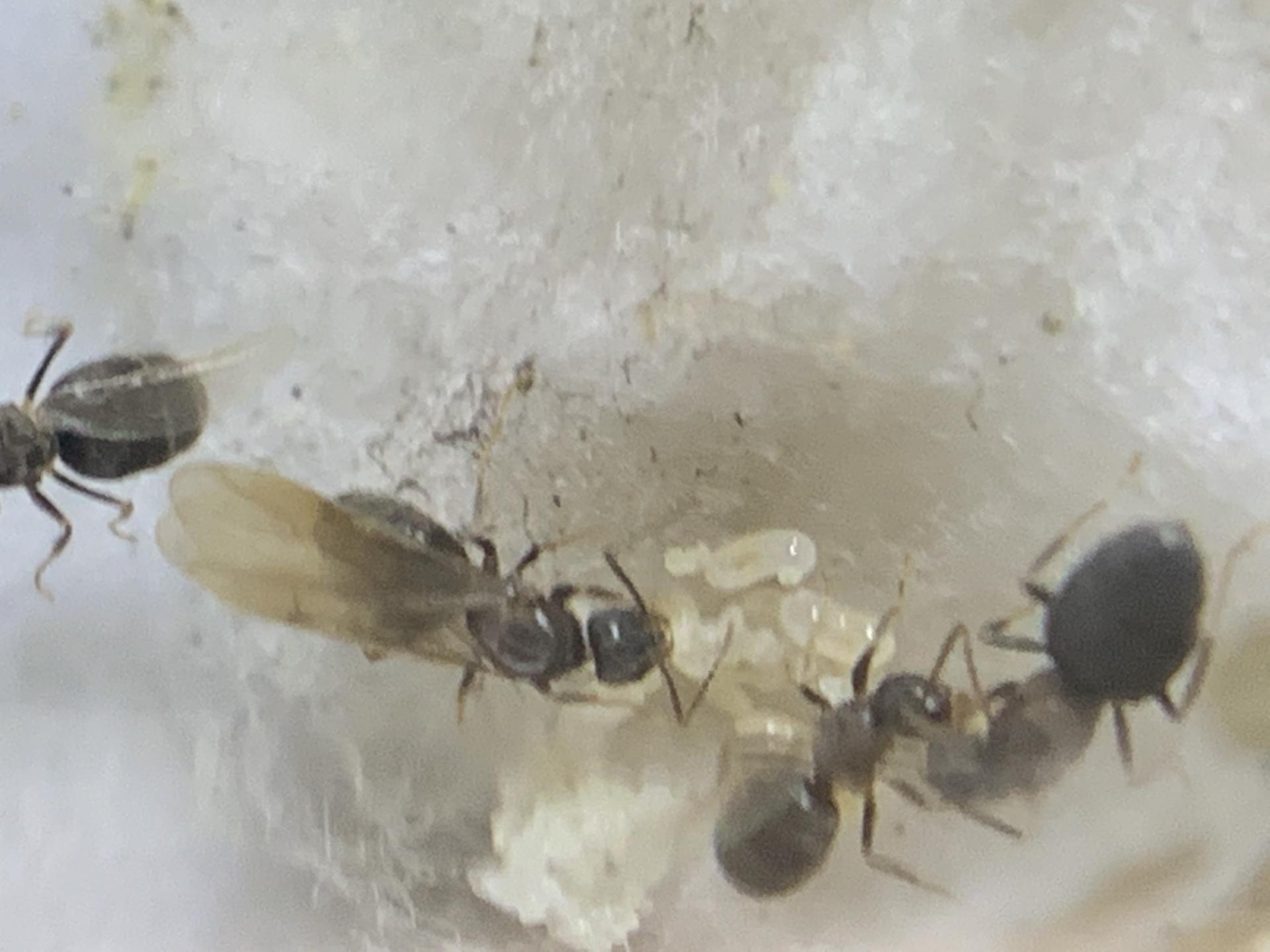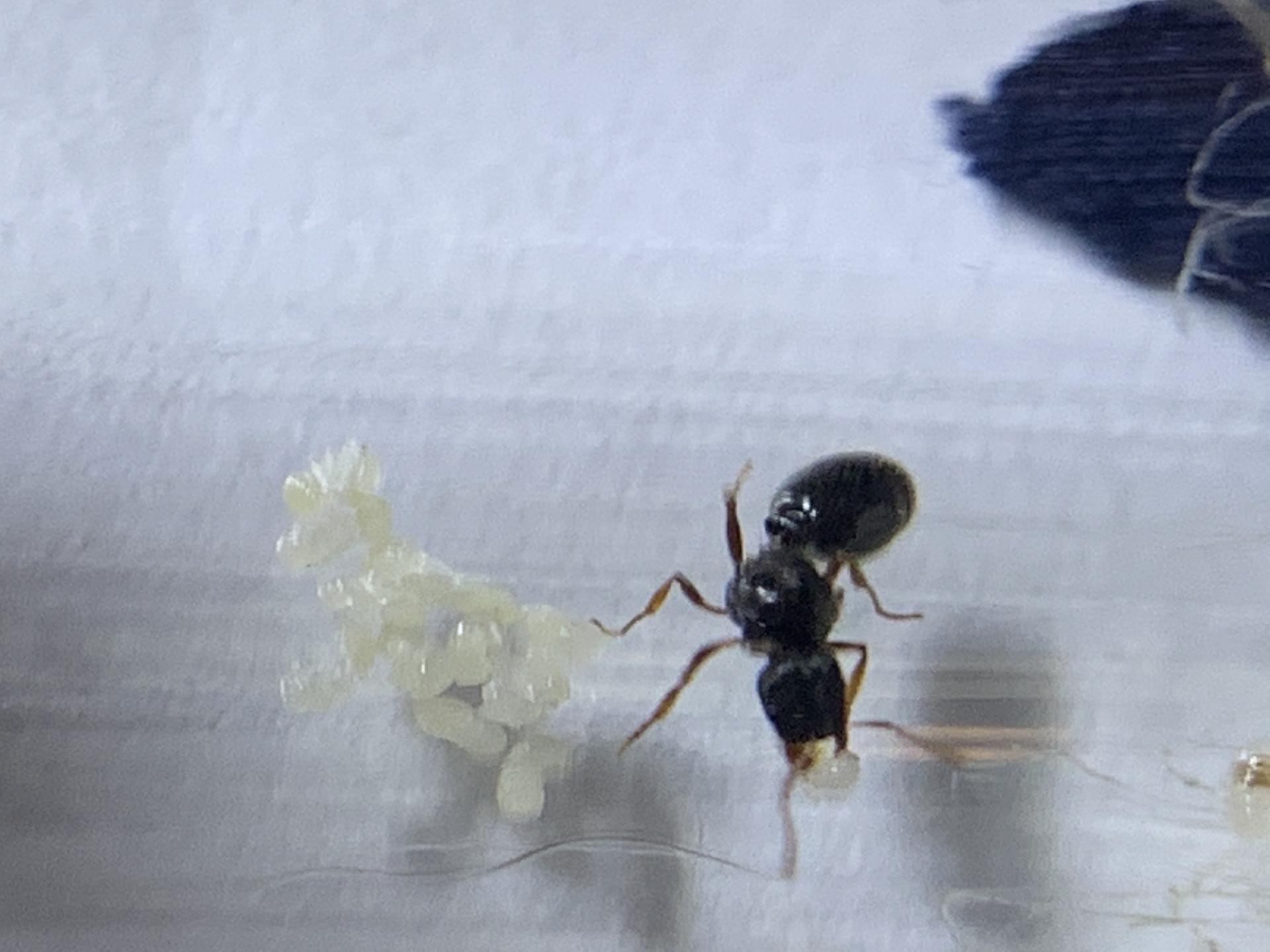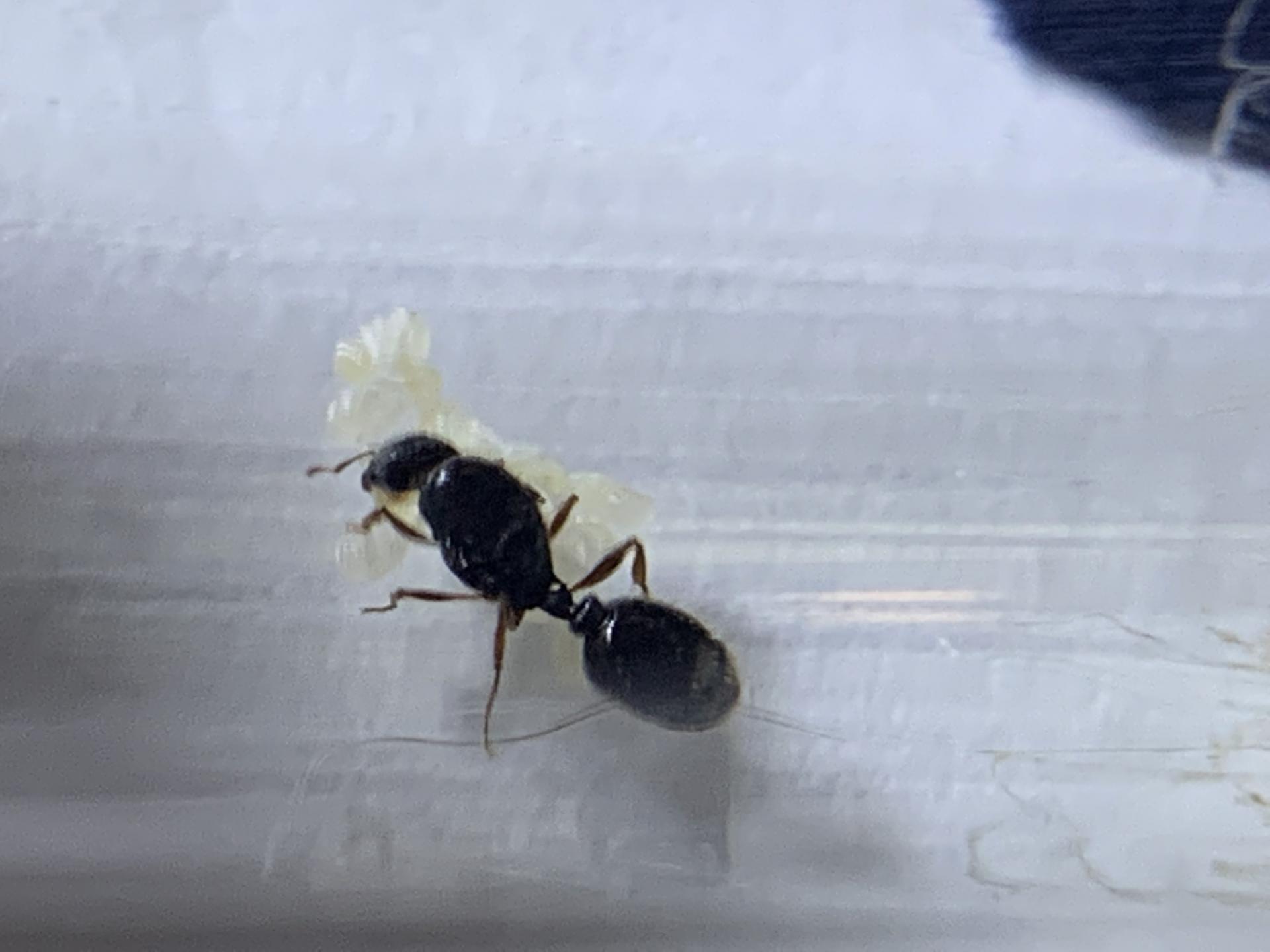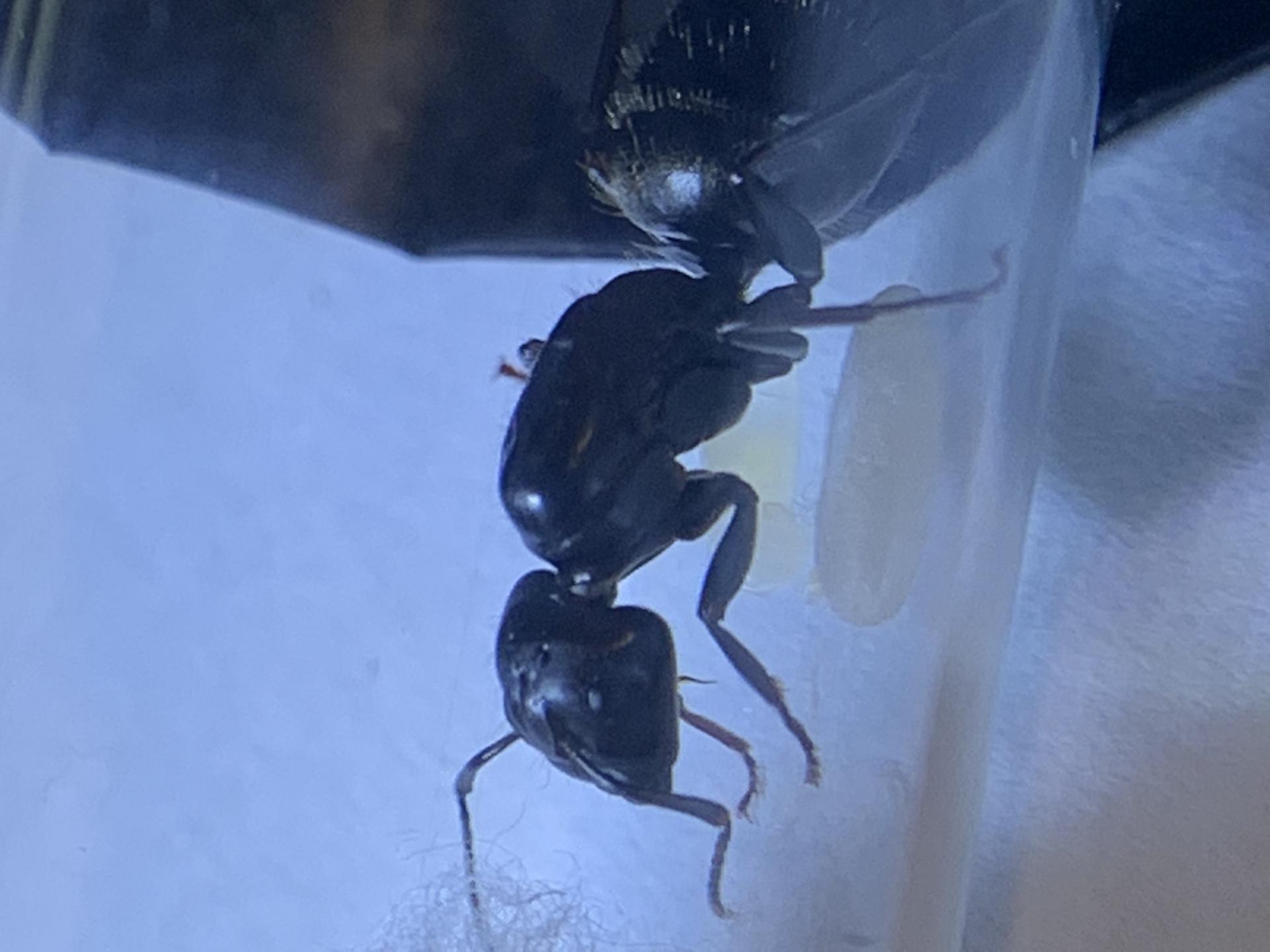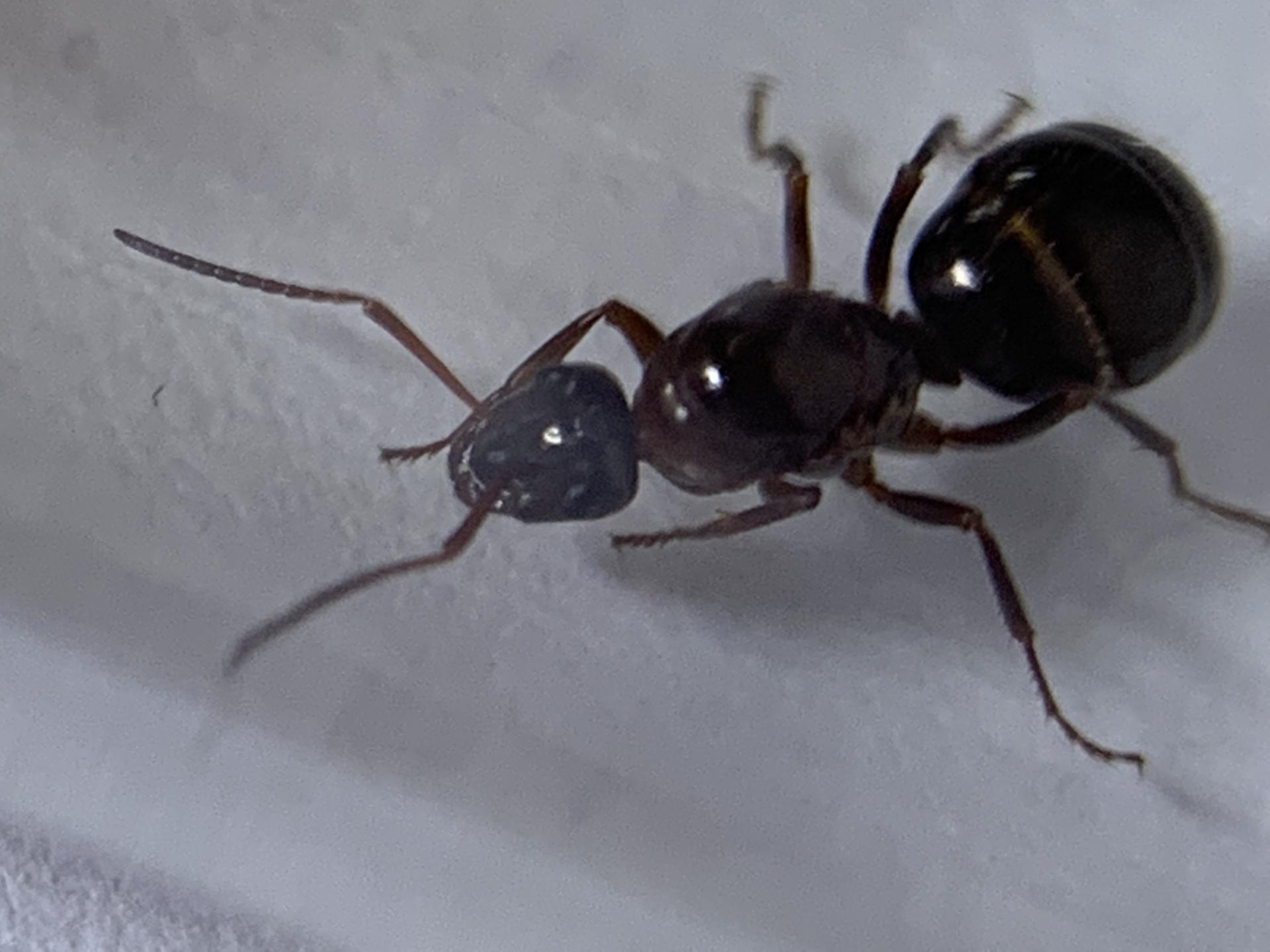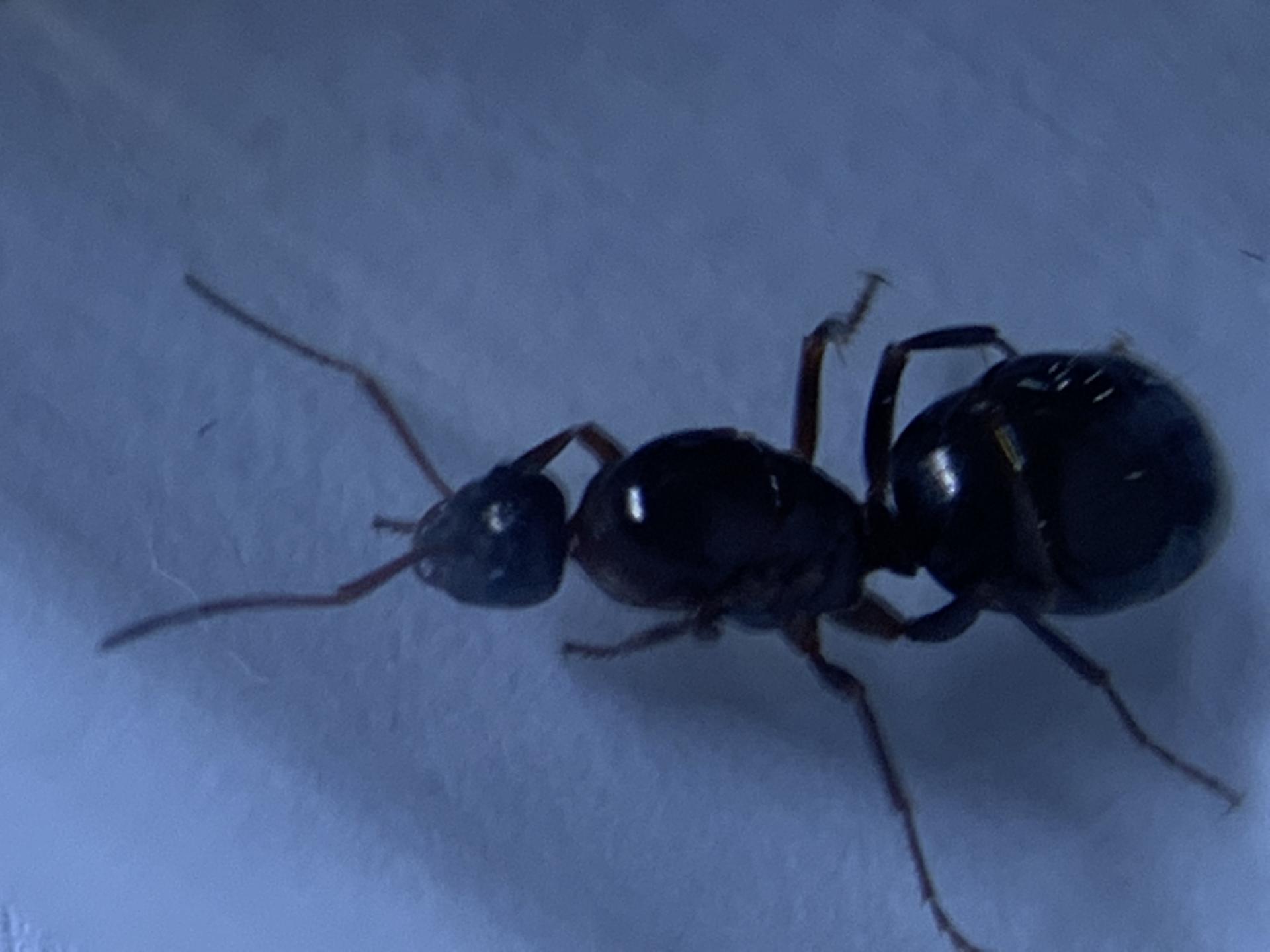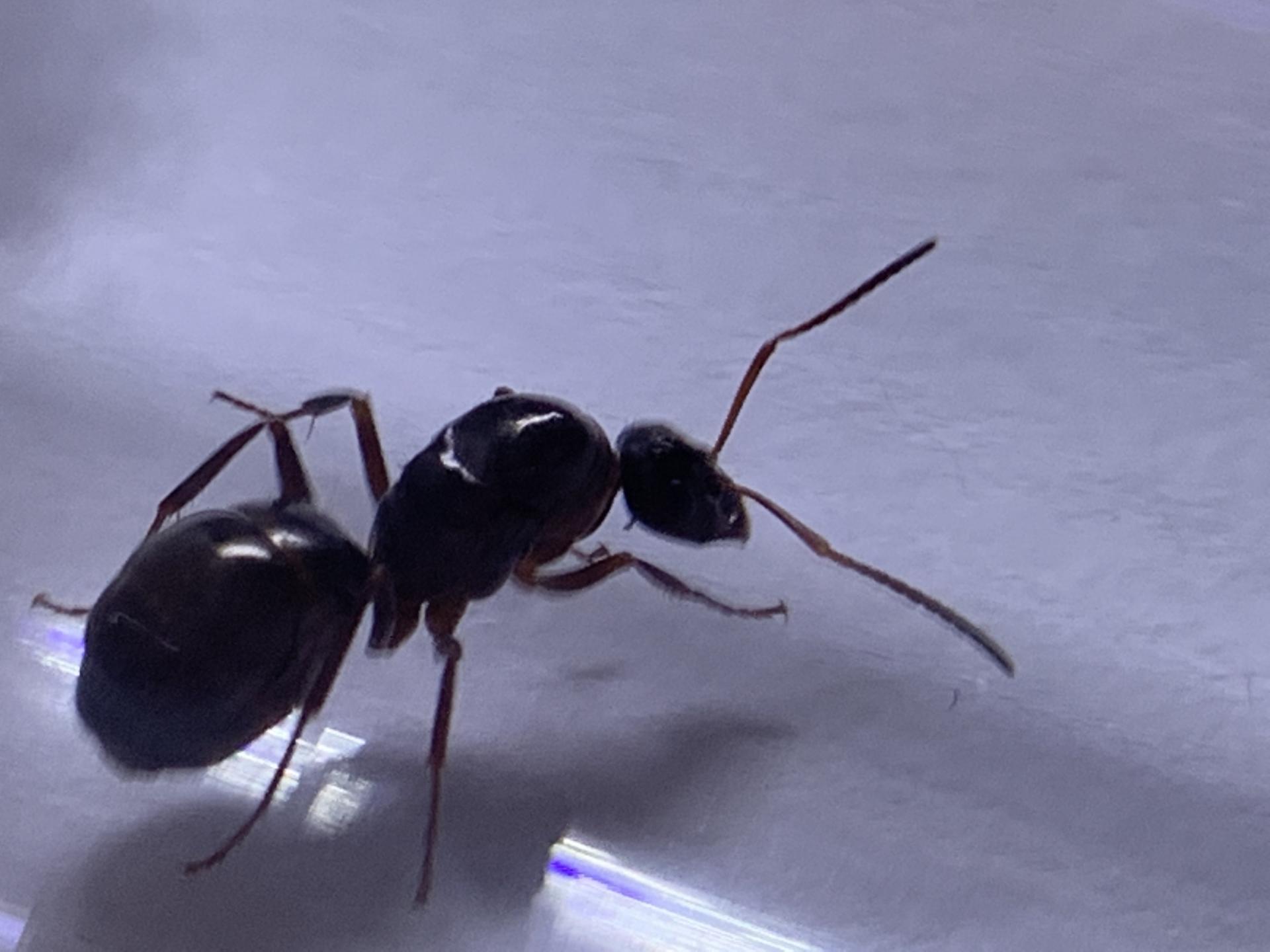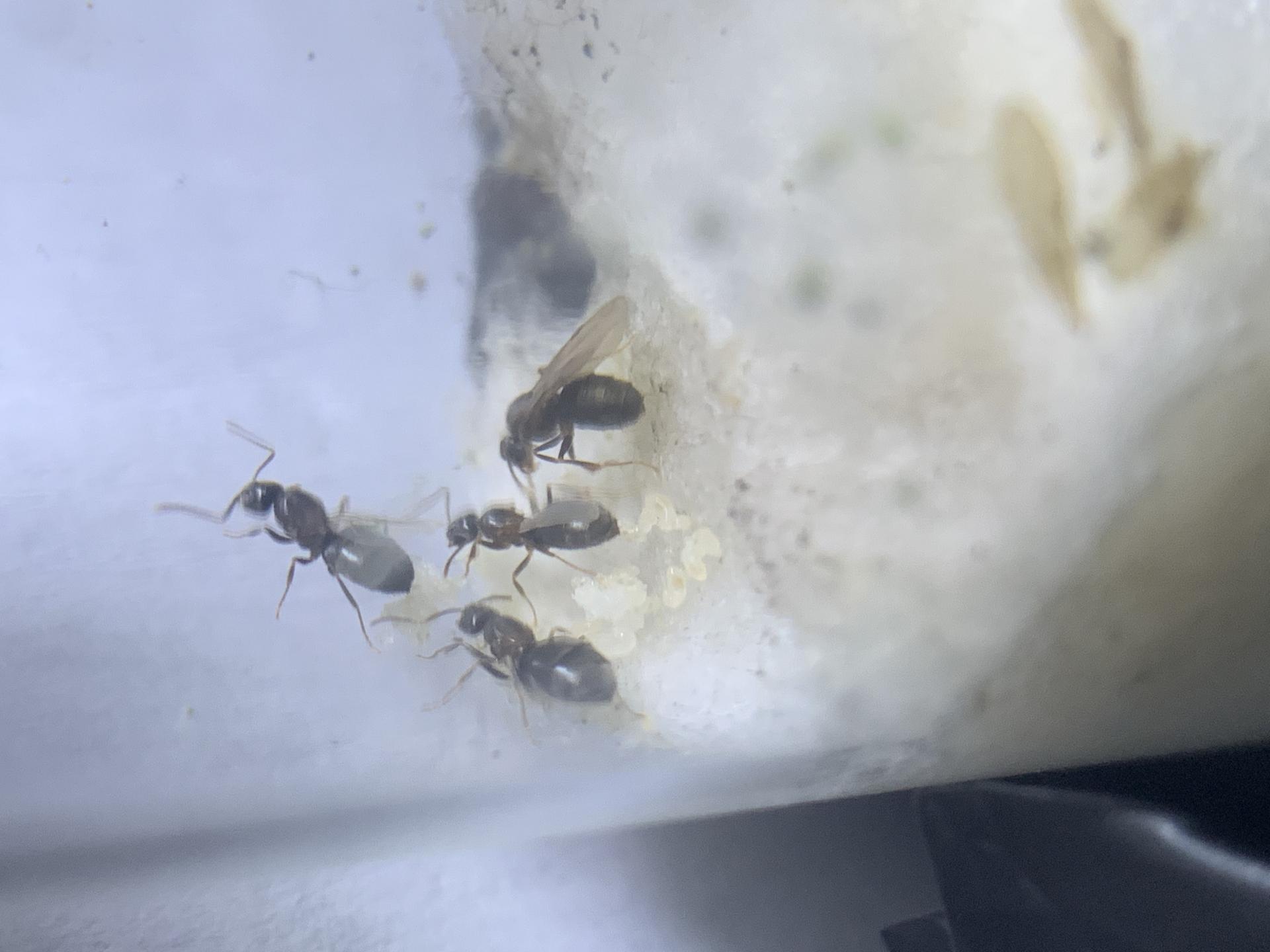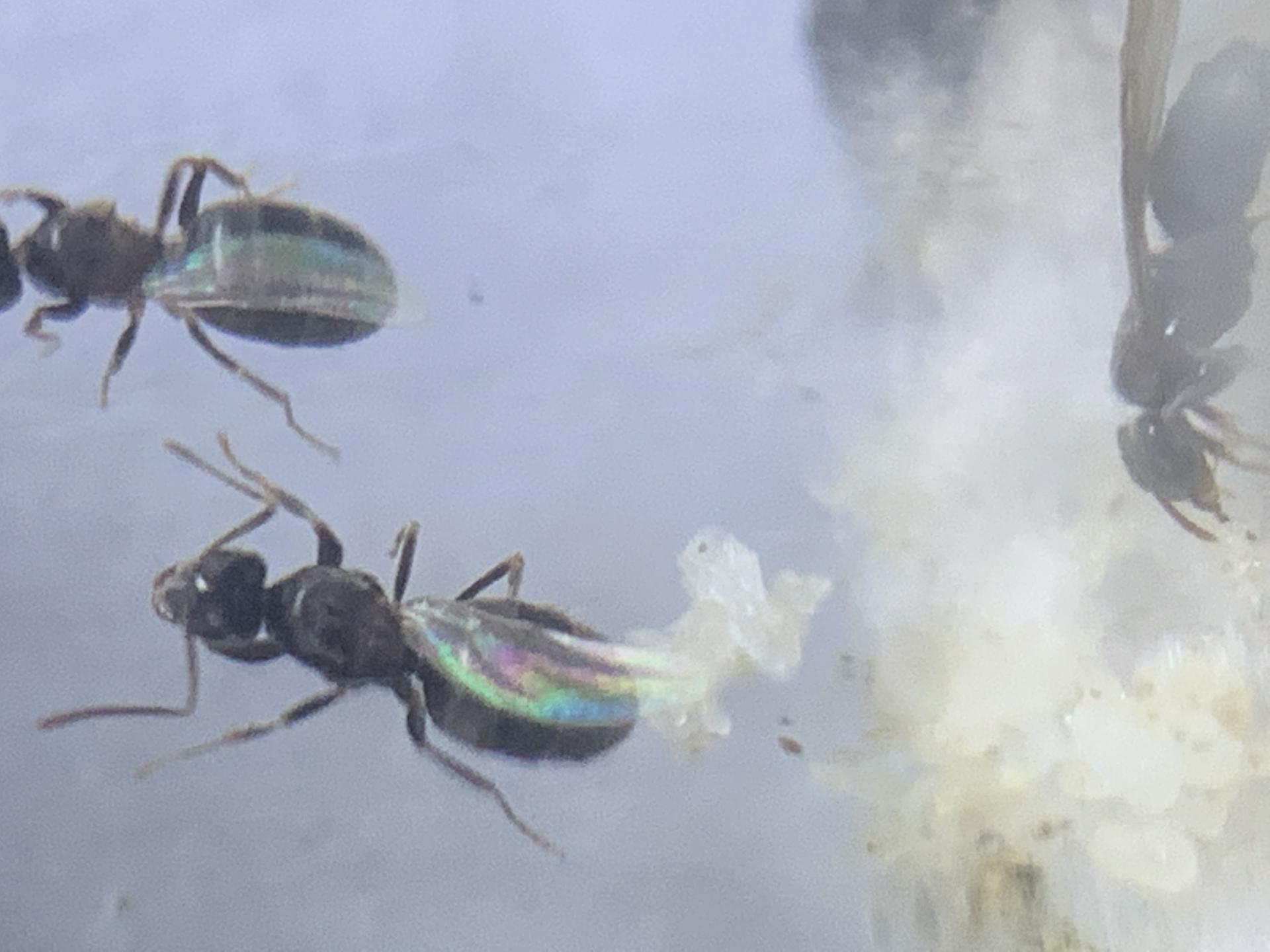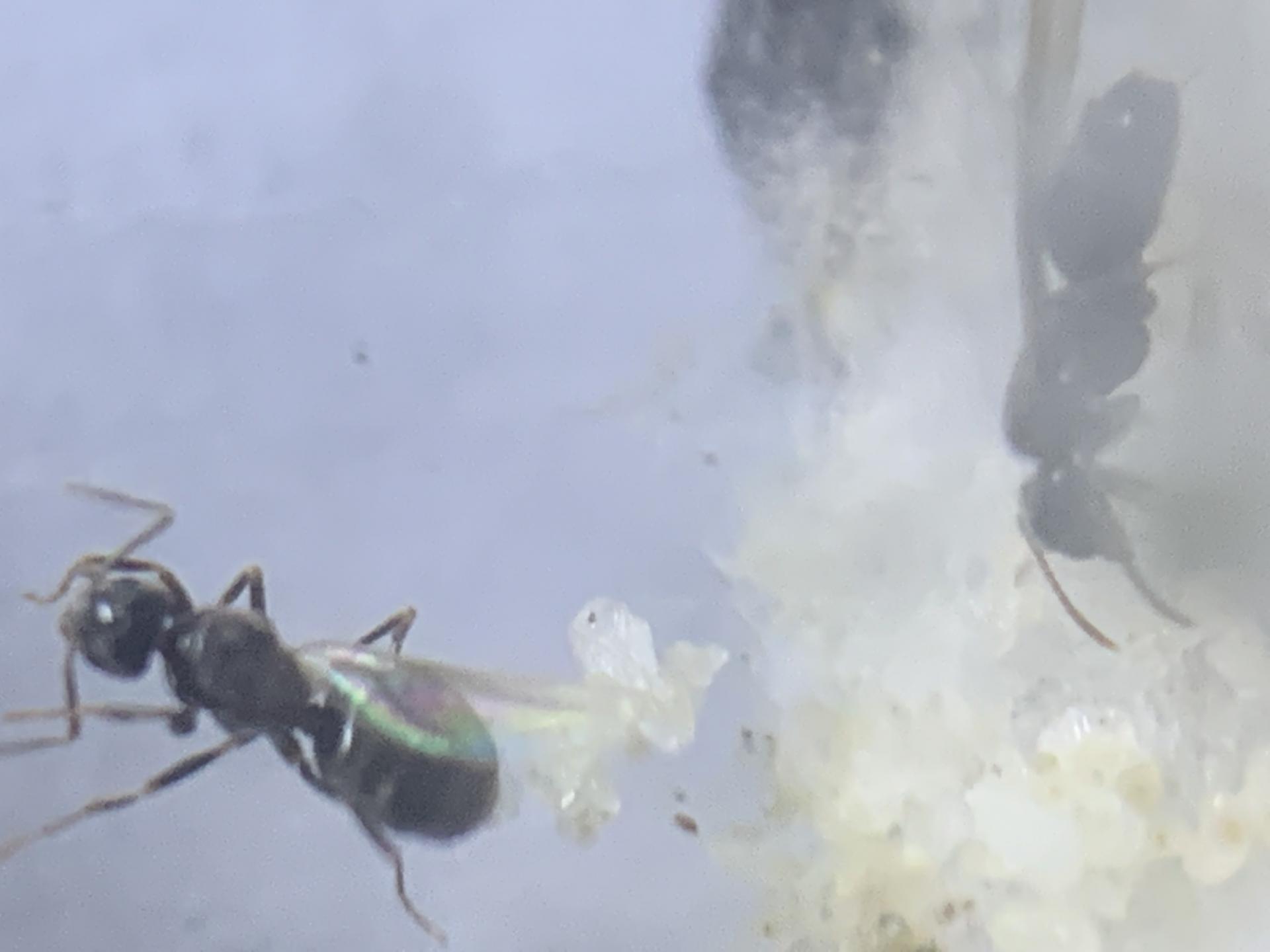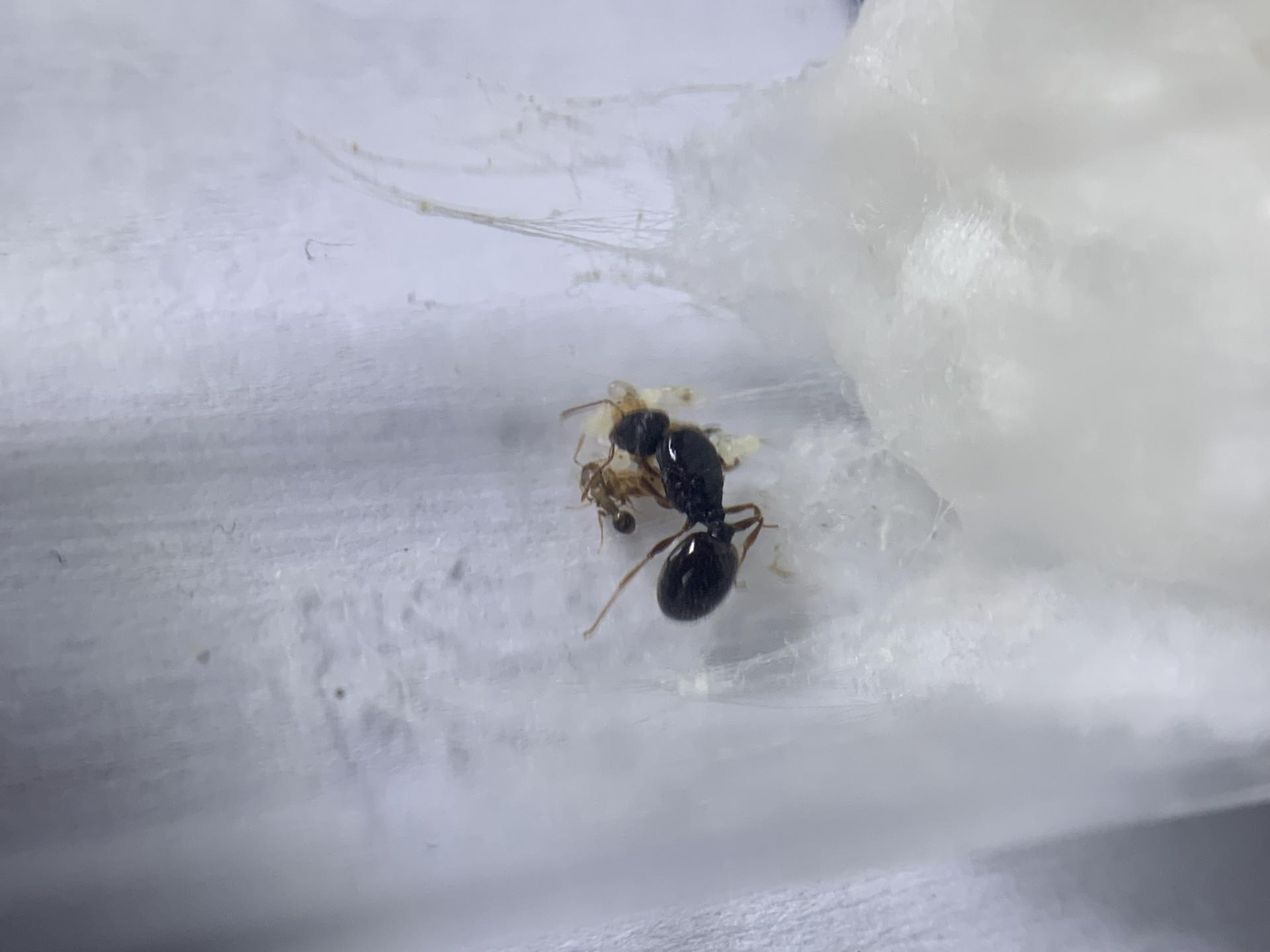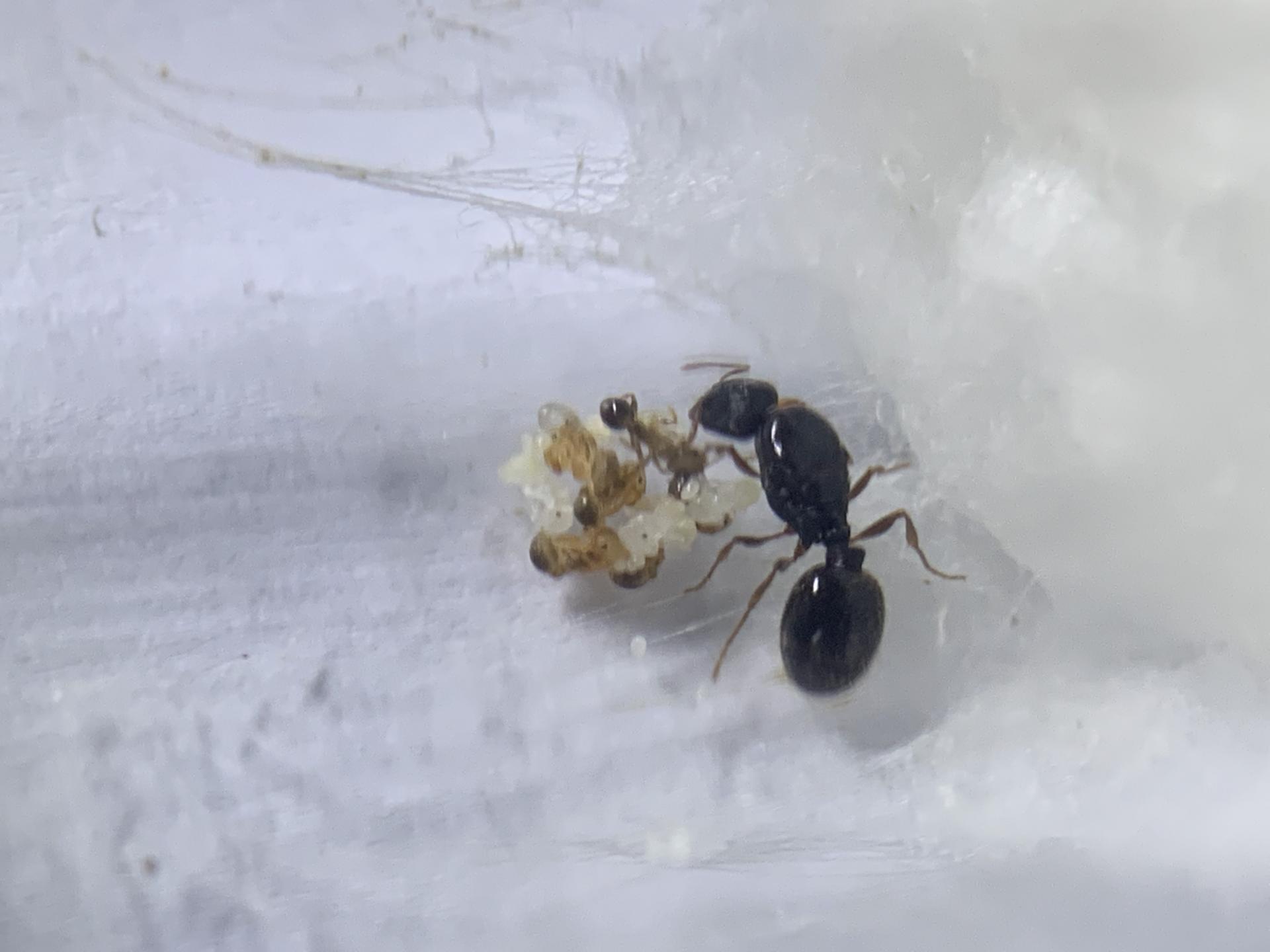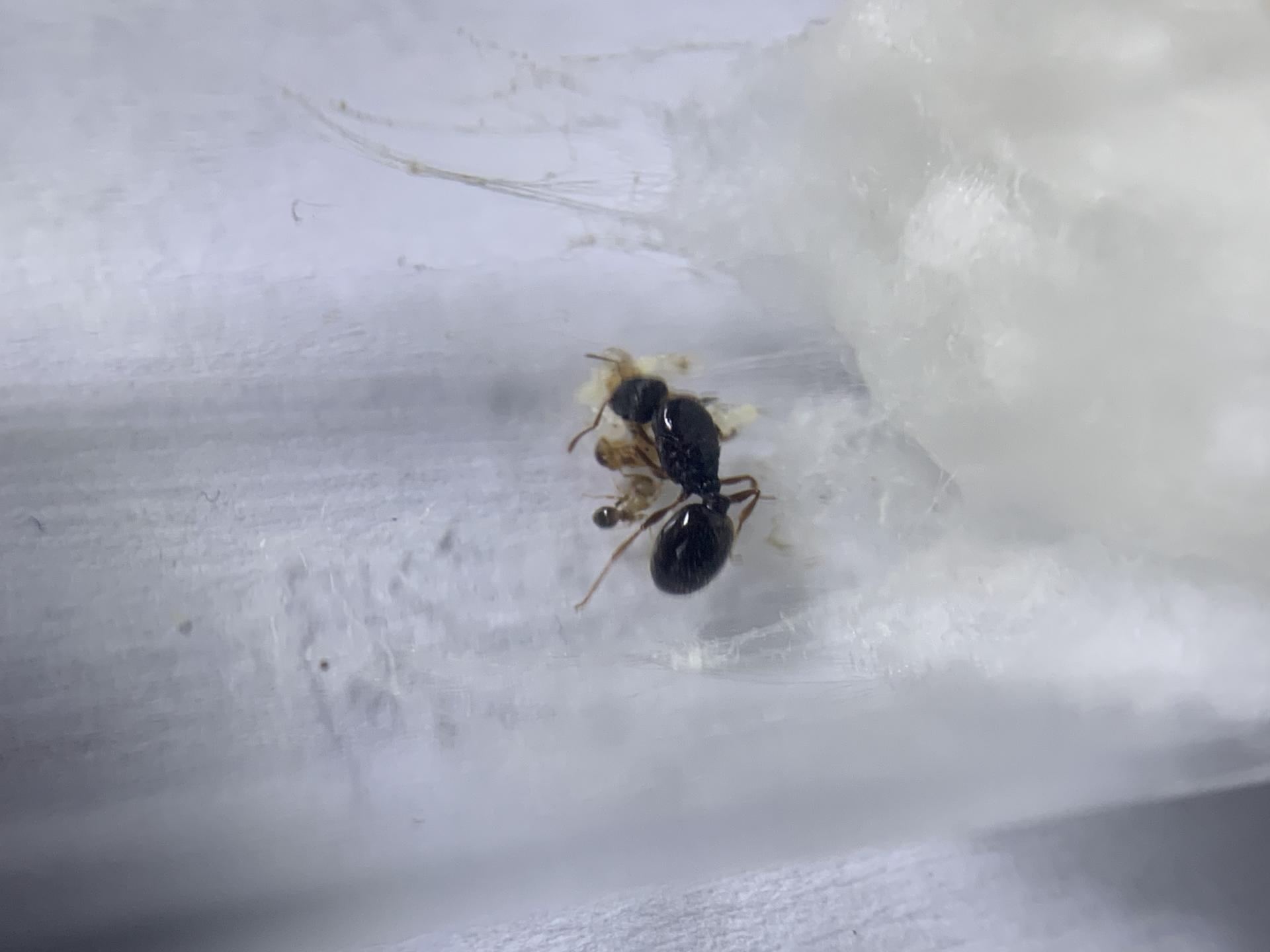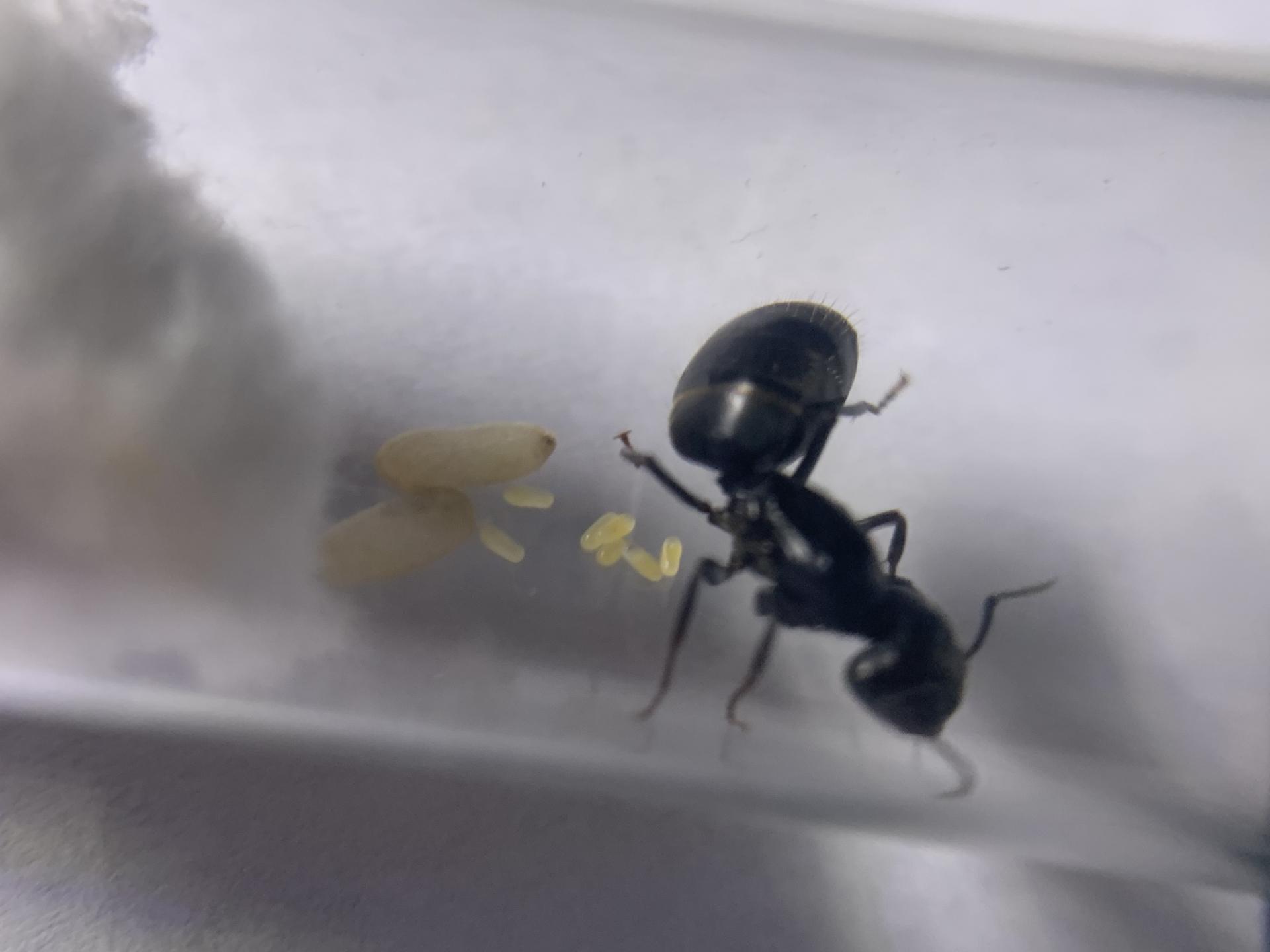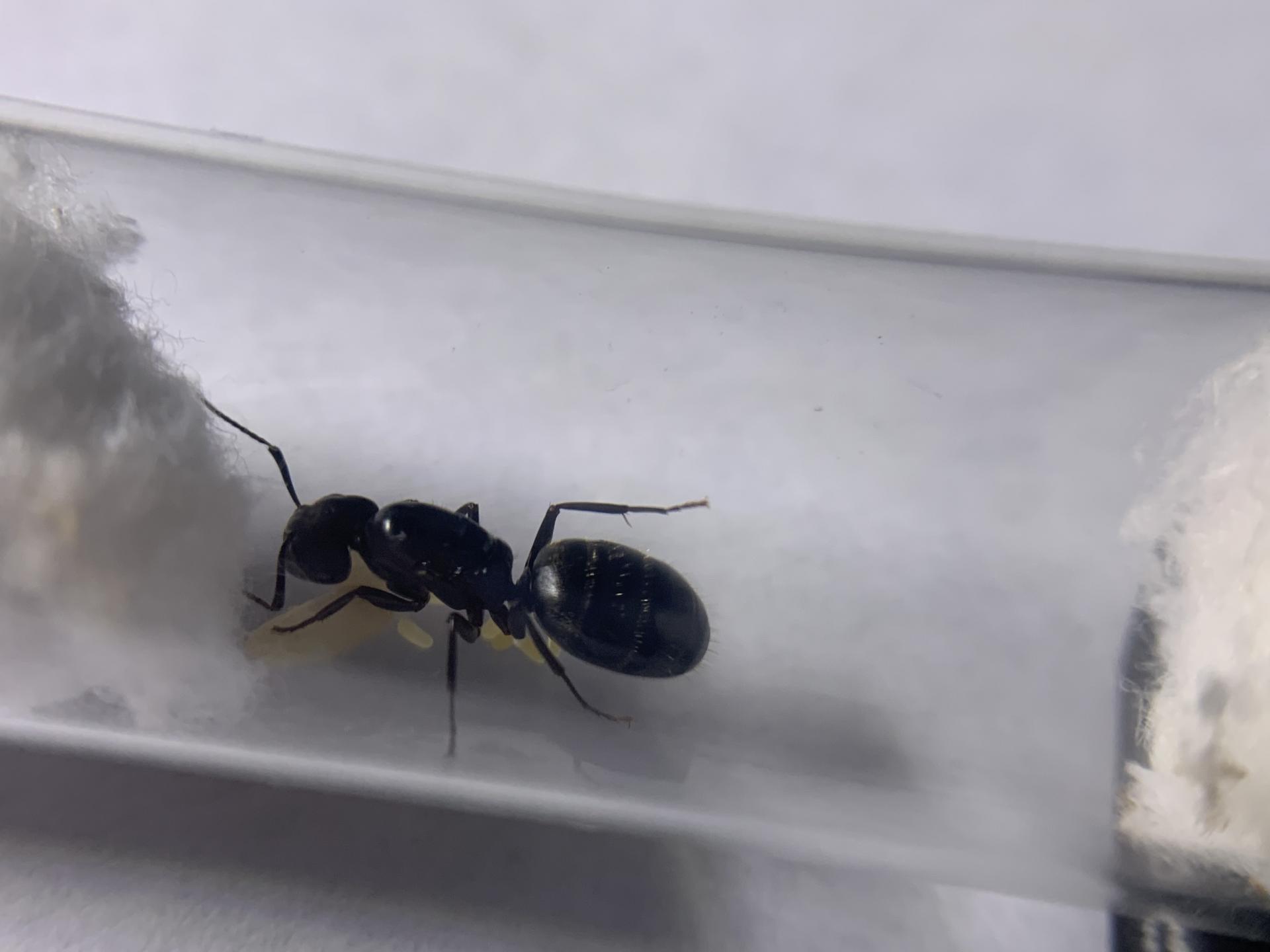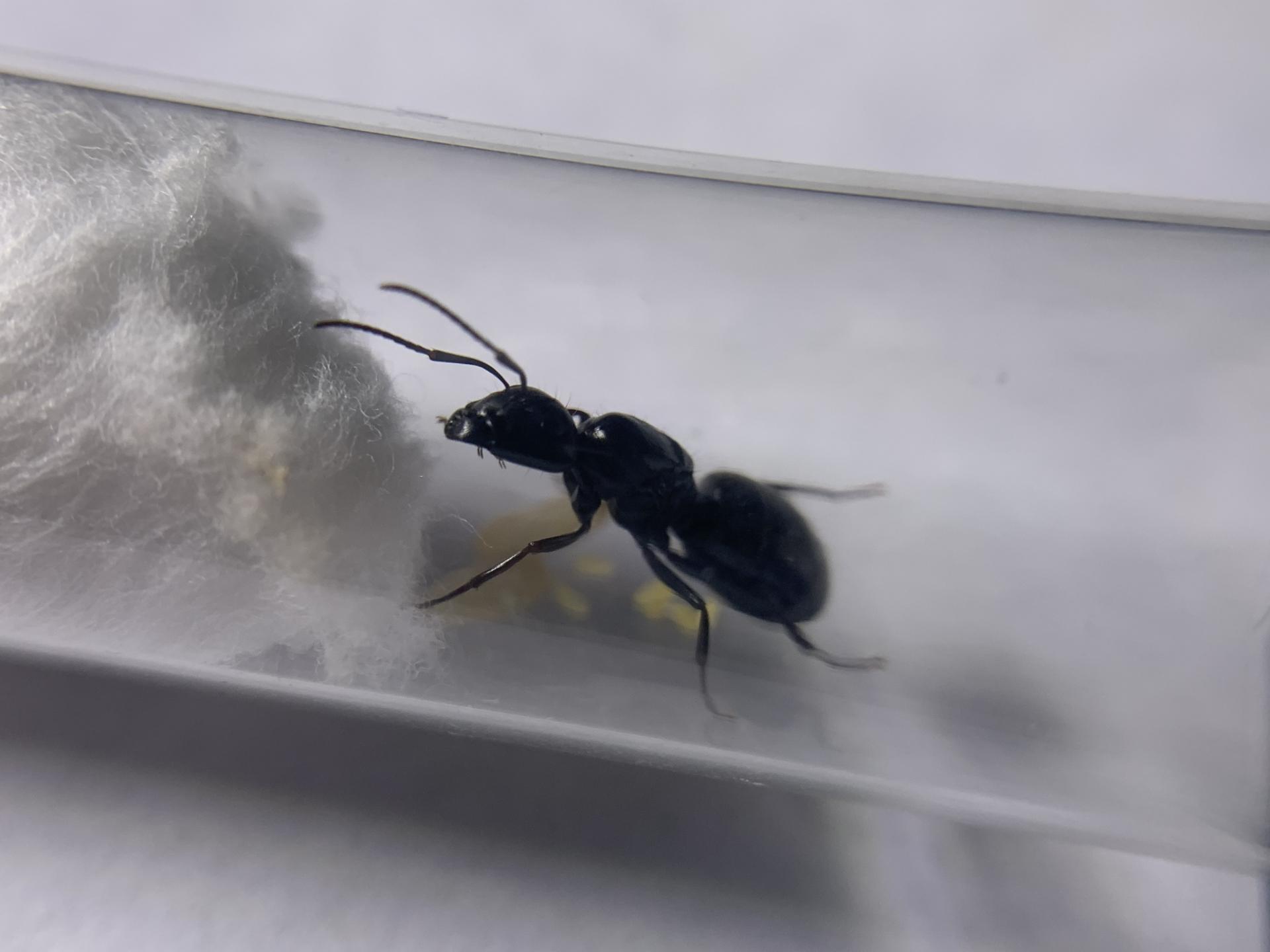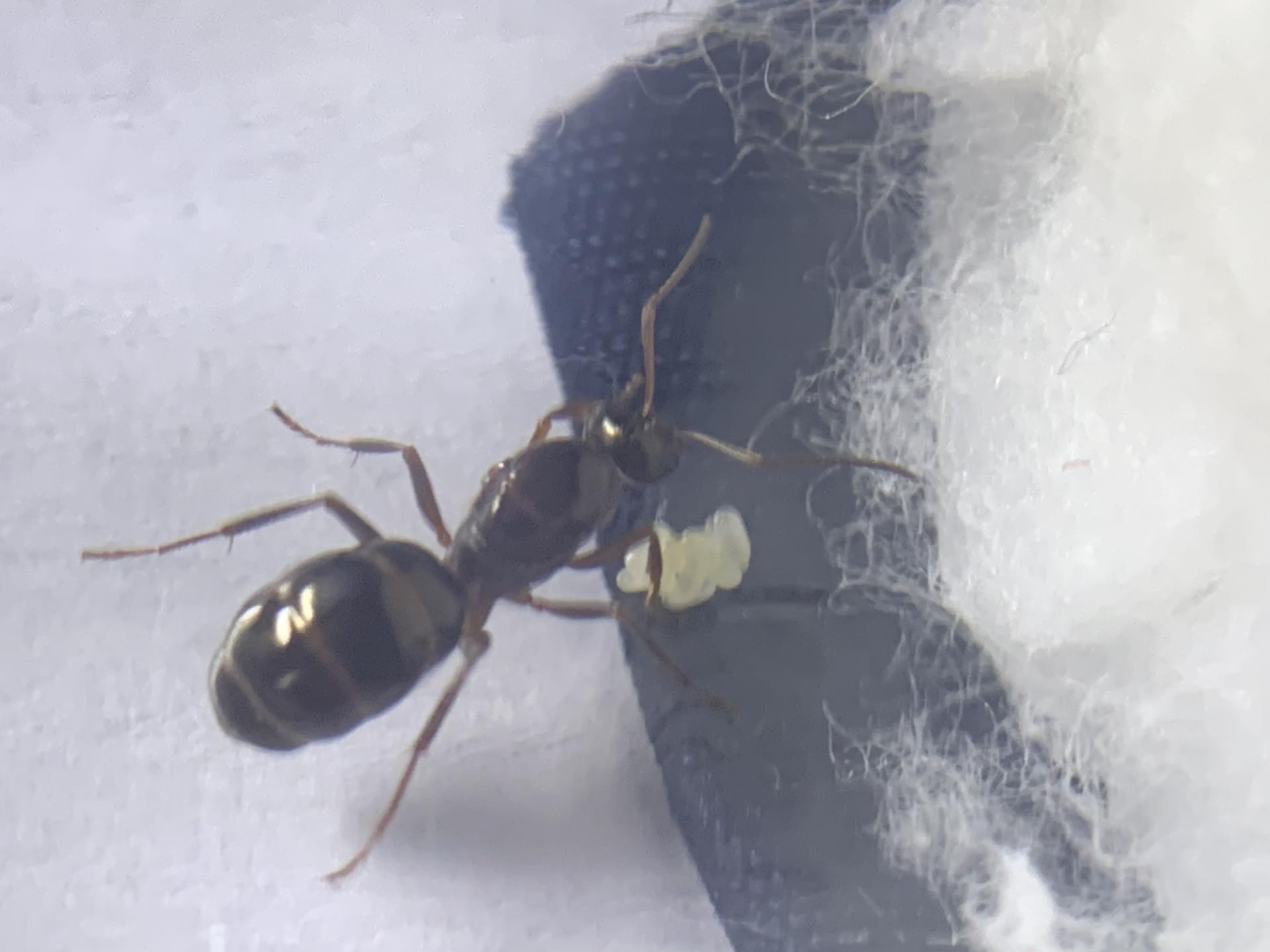Hello fellow ant keepers!
Yesterday and today have been amazing nuptial flight days and the first nuptial flight since I moved here to Illinois, I wanted to document all these colonies without having 7+ journals, so welcome to my journal!
Currently keeping
My very Numerous
Nylanderia parvula -
5 queen polygynous colony
2 single queen colonies
Camponotus Chromaiodes (previously herculeanus) -
1 queen, so far
These are all I’ve got currently from yesterday, however yesterday I found many more queens other than these two species, mainly all different nylanderia sp. however they were so small I let them go. I also saw what looked kind of like myrmica, however it ended up flying away. Either way today I’m going to go to my local park and look for more species.
In photo 1 we have the first three queens I caught of Nylanderia, which ended up becoming the 5 queen colony
In photo 2 we have all 5 of the Nylanderia queen colony, I decided to put the two Nylanderia queens I found that already broke their wings off in their own setup, just in case the others weren’t fertile.
Photo 3 is of one of the single Nylanderia queens I have, she seems like she also might be a different Nylanderia species as well because she’s slightly smaller than the others.
In photo 4, 5, and 6 we have the camponotus chromaiodes queen, I found two of these gals, however the other kept trying to fly, so I knew she wasn’t mated, this one however I found crawling on the ground and she didn’t try to fly at all, which is a good sign she’s mated.
See y’a in another post!
Edited by yibsi, July 11 2021 - 9:50 AM.


